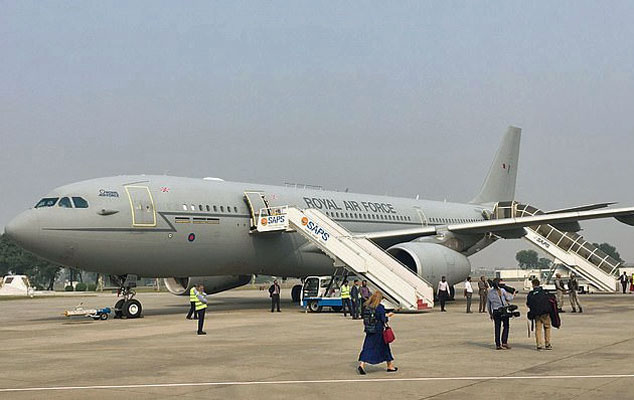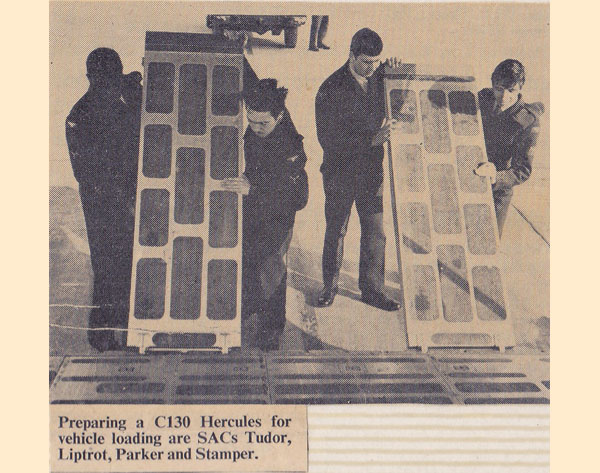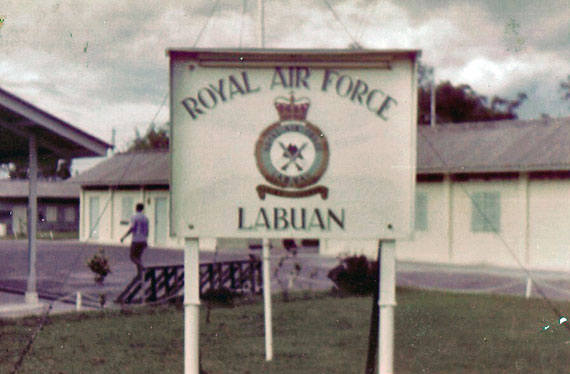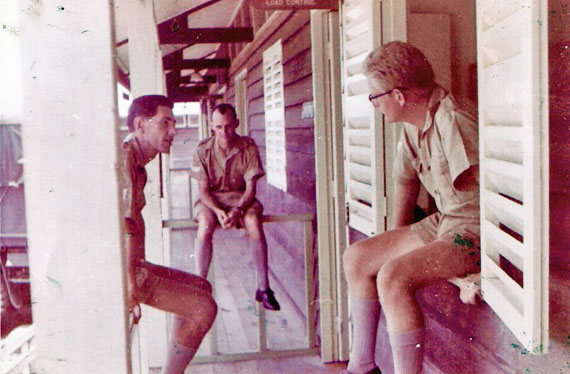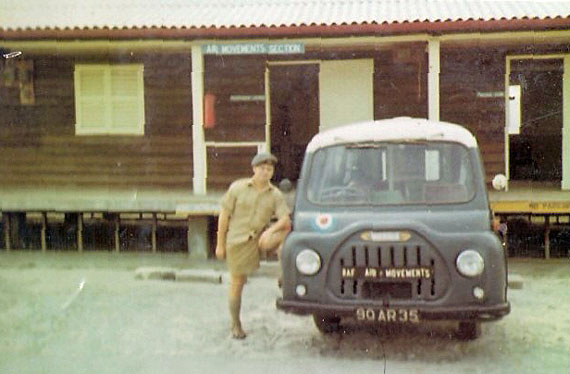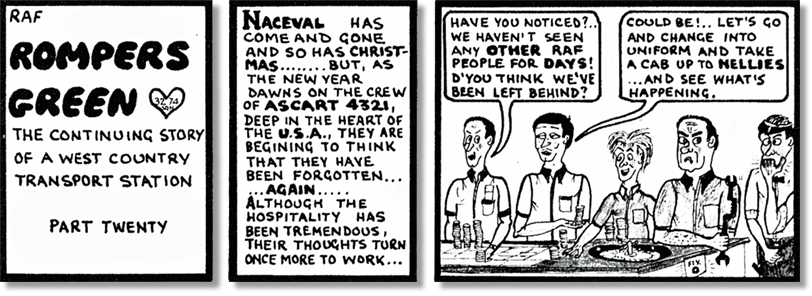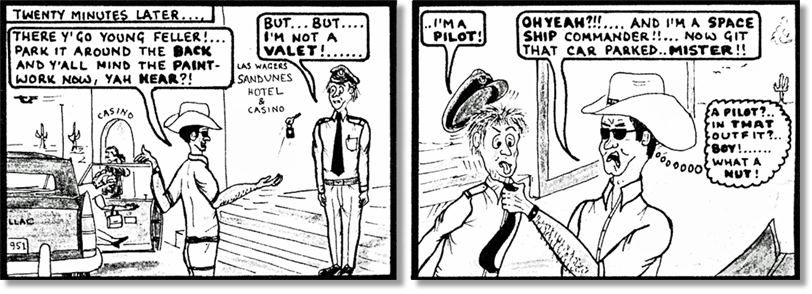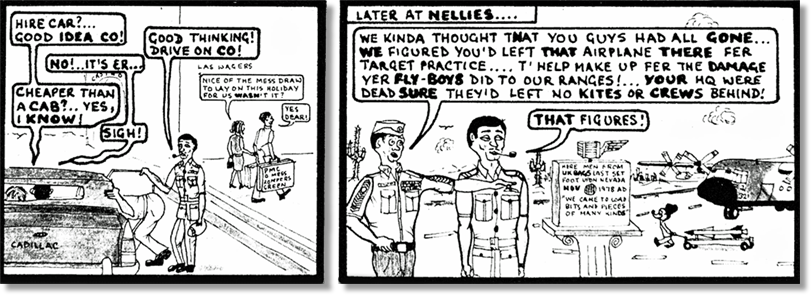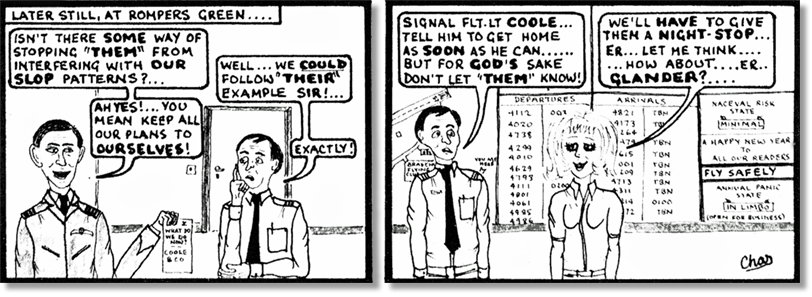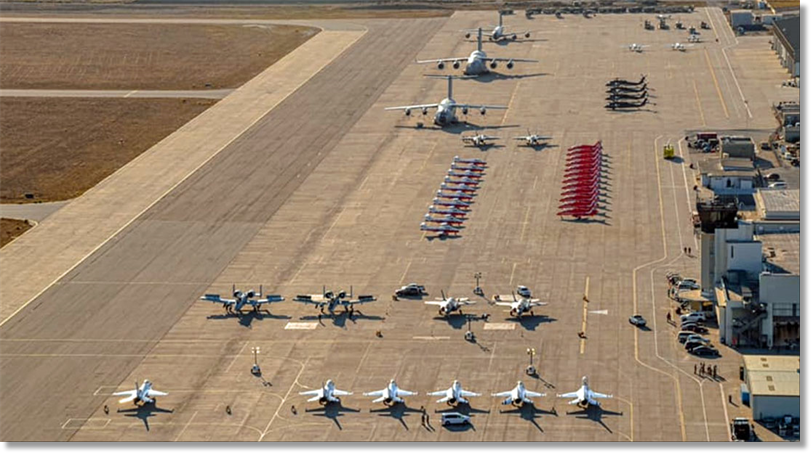
RAF Red Arrows - October 8th 2019
What a line-up! A simply brilliant photograph from the weekend showing the amazing collection of aircraft at Los Alimitos, displaying for the Great Pacific Airshow. This included the RAF Airbus A400M Atlas, the RAF Red Arrows, USAF Thunderbirds, RCAF Snowbirds, USAF GF-35 Lightning II and A-10C Thunderbolt Demonstration Teams.
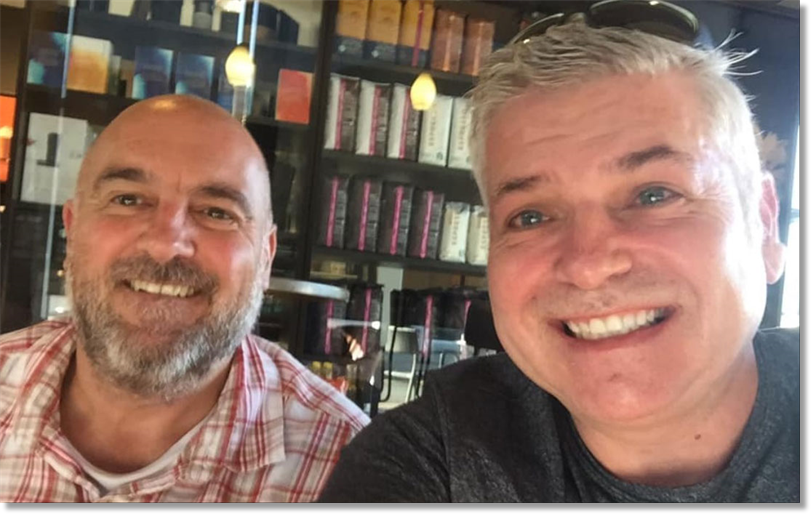
From: Chris Clarke Mover meet in Halifax, Nova Scotia! Great to have a Starbucks with the famous Sparra, Gary Brooksby! Really good to meet a fellow Mover in this fantastic city! What a good guy!
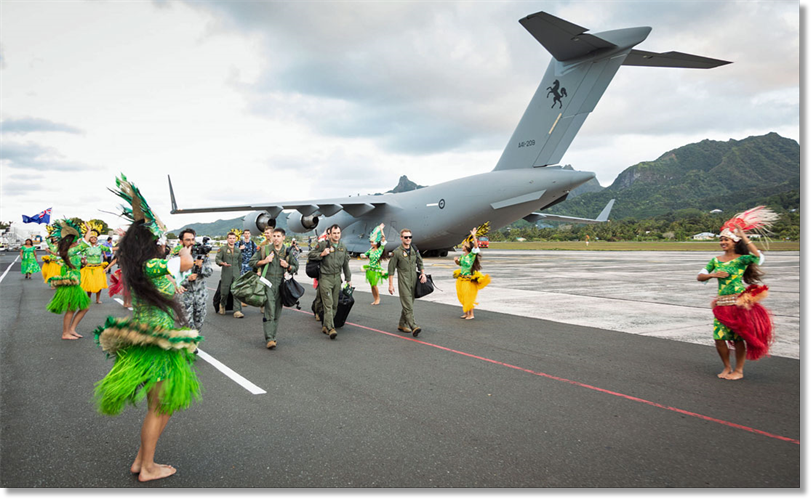
Royal Australian Air Force No. 36 Squadron crew are greeted at Rarotonga International Airport by the Cook Island National Arts Theatre performers, who will soon become passengers aboard the C-17 Globemaster headed for Sydney, for the upcoming Royal Edinburgh Military Tattoo, October 10, 2019.
From: Gordon Gray, Allestree, Derby
Subject: Question
Question; when did QM brevet change to AQM/ALM? Are there such aircrew now, seen something like Weapons Operator?
Regards
Gordon
From: Tony Gale, Gatineau, PQ
Subject: RE: Question
The brevet bunch is very confusing nowadays… Weapons System Operator (WSOp) is now the parent of CWM, ALM, MSO and ISR – Scroll down the page and you will see:
https://www.raf.mod.uk/recruitment/roles/roles-finder/aircrew/weapon-systems-operator
As for when QM became ALM? – I have no idea - ¯\_(ツ)_/¯
Best regards
Tony
New gender-neutral guidelines will allow male Navy personnel to wear makeup, false eyelashes
The New Zealand Defence Force will be updating its grooming and appearance guidelines to reflect a more gender-neutral attitude for the Royal New Zealand Navy (RNZN), meaning male personnel can wear makeup and nail polish if they wish to do so.
Newshub received information from a Navy insider last week that the RNZN will implement a more inclusive set of appearance and grooming regulations. Chief of Navy Rear Admiral David Proctor confirmed the changes in a statement to Newshub on Friday. "The NZDF can confirm that as of November 1, 2019, guidelines around grooming and appearance for Royal New Zealand Navy personnel will be updated," said Proctor. "These updates are to reflect that the RNZN make no distinction between male and female members in terms of their personal grooming and appearance. These changes reflect that diversity and inclusion are critical to our success as an organisation, as are the unique traditions and characteristics of the RNZN."
Proctor said the RNZN's grooming standards are based on neatness, cleanliness, safety and military image. The updated regulations mean as of November 1, all Navy personnel are permitted to wear discreet makeup, clear or pale nail varnish when in uniform, "trimmed, neat and natural" false eyelashes, one pair of "natural coloured" stud or sleeper earrings and perfume or cologne in moderation. Rings may be worn on a maximum of two fingers.
Navy personnel are also allowed to use natural-coloured hair dye or have their hair "lightly tipped", as long as it's clean and neatly groomed. Long hair is also permitted in a bun or single plait to ensure safety and tidiness. The appearance guidelines still prohibit body piercings, "exaggerated hairstyles" (partially shaved heads, mohawks, undercuts and "zigzagging of hair" included) and hair accessories.
"These standards are designed to present an inclusive, professional military image," said Proctor. The RNZN is a modern and professional organisation that embraces individuality and personality.
However, we are a military organisation and with that comes certain expectations on our personnel in terms of dress and appearance." Newshub
Transport Command 1961
A unique look at RAF Lyneham in the early 1960s, with its fleet of Transport Command Britannias and Comets. The film includes an extensive look around inside Lyneham's Operations Block and Passenger Reception areas, as well as following typical flights from Lyneham to Gan, Aden (where Beverleys are much in evidence) and Nairobi's RAF Station Eastleigh.
FOCKE WULF 190 vs. SPITFIRE | REAL Tailchase
Focke Wulf 190 A8 flown by Klaus Plasa chasing a Supermarine Spitfire Mk.18 flown by OBA Member Rob Davies. All filmed at the Hangar 10 Fly-In September 2019.


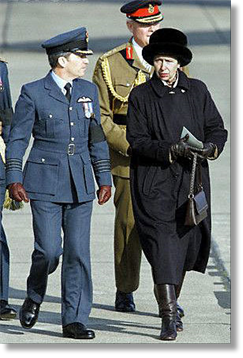
My first experience of the procedure was on a day shift when she was due to fly into Lyneham on return from an engagement in the Channel Islands. My part was to drive her car from the hangar and to bring it around to the steps as the aircraft stopped taxiing. Once I got the call from ops that the aircraft was on finals, I found the car keys where they were supposed to be in the DAMO’s key press on the wall of the office (a good start, but with hindsight an indicator that things could only go downhill from that point on), walked through the customs hall into the hangar and got into the car. It was here that I hit the first snag.
From: Andy Gell, Truro, Cornwall
Subject: Now it can be told
I am reminded of a VIP-related event from my spell as a DAMO at Lyneham in the 80s.
At 6’3” I was somewhat taller than the Princess, but the driver’s seat was set for her and the strict instructions were that it was not to be adjusted as she would expect to jump straight in and drive it away herself. I just about crammed my body in, with my chest pressing against the steering wheel and my knees at what felt like ear level
Very gingerly I manoeuvred the car out of the hangar (yes, I remembered to sound the horn) and waited while I watched the aircraft taxi in. The aircraft door opened and I swept the car around, halting in exactly the spot indicated, with, I felt, something of a flourish.
Princess Anne stepped out of the aircraft and I suddenly realised that the very upmarket, brown Rover Vitesse that I was sitting in was far too modern for a simple lad like me and I could not work out which was the door handle that I needed to operate to let me out.
The Princess was approaching the car – as ex-movers will appreciate, it is not very far from the door of a HS125 to the ground – and I had pulled and pressed every button and lever in sight, but without success.
By this time I was hammering on the car window trying to attract the Stn Cdr’s attention so that he would open the door to let me out. He remained oblivious – there was always lots of background noise on the pan at Lyneham in those days – but he realised that something was wrong when the Princess reached the car, which still had its door closed and me in the driving seat. She immediately took in the situation and started to laugh in a very good-humoured way.
As any ex-serviceman can imagine, the Stn Cdr was a tad less relaxed about the situation, but he had the wits to pull the door open, I fell out, and the Princess gave me a smile, hopped in and drove away.
Afterwards, I recall relating my tale over a restorative mug of coffee to the D/DAMO, dear old Terry Titterington (RIP), who found it hilarious.
To this day, I think that I have a claim on being the serviceman that came closest to having the car door opened for him by a member of the Royal Family rather than vice versa! However, perhaps one of the Newsletter’s other readers has a better claim?



The RAF Voyager carrying the Duke and Duchess of Cambridge had to abandon its landing in Islamabad and return to Lahore due to terrible storms in Pakistan tonight.
The pilot tried to land twice at two different airports amid significant lightning and turbulence, but was forced to go back to Lahore Airport for safety reasons.
Prince William took the mid-air drama in his stride and walked down the Airbus A330 plane to check if everyone on board was OK - even joking that he was flying.
Royal correspondent Rebecca English, who was travelling on the plane with other members of the press, described the experience - saying 'few of us have experienced turbulence as bad as that'
The RAF Voyager was in the air for more than two hours, with one passenger saying it was a 'pretty serious storm', describing the flight as a 'rollercoaster'.
'The pilot circled for an hour but the lightning - and turbulence - was so bad we had to fly back,' tweeted the Daily Mail's royal correspondent Rebecca English, who was on board the plane. 'Few of us have experienced turbulence as bad as that,' she added.
'If I'm honest ... that was the most nervous I've ever felt in a plane,' added ITV royal correspondent Chris Ship.
Daily Telegraph correspondent Ben Farmer said the pilot had tried to land twice, once at a military base in the garrison city of Rawalpindi adjacent to Islamabad, and once at Islamabad International before abandoning the attempt and returning to Lahore, some 270 kilometres (170 miles) flying distance away.
The flight from Lahore to Islamabad following a day of visits to a mosque, cancer hospital, cricket academy and children's home was only meant to take 30 minutes. But the plane was ten minutes from landing when it encountered significant storms, with passengers filming dramatic flashing through the windows. The Voyager then circled for an hour before trying to land at two airports – the main airport in Islamabad and then the Pakistan Air Force Base Nur Khan, Rawalpindi.
The Daily Mail (c/o Tim Pyne)
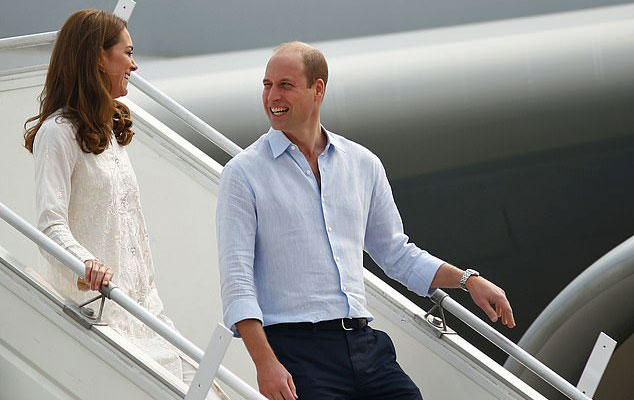
From: Mark Attrill, Tallinn
Subject: Now it can be told
In 1991, I was posted to RAF Turnhouse, a small MoD enclave on the edge of Edinburgh Airport where I inherited a small Movements Section. In fact, although I was officially labelled OC S&M Flight, I was also de-facto OC Operations. My Movements Section consisted of one Cpl (ATC Assistant) and one SAC (Mover). We were, much to my initial surprise, kept very busy in this little enclave. Apart from the regular Maritime Patrol traffic (associated with Joint Maritime exercise planning), we had weekly visits from RAFG based Harriers and Tornadoes, which were no longer permitted to conduct their low-level training in Germany following the outbreak of peace but were unable to fit into the already overcrowded Visiting Aircraft Sections at Leuchars, Lossiemouth and Kinloss. Our VIP workload was immense too, often surpassing that of RAF Northolt - AOC 18 Group used to commute from London almost weekly, several MPs resided in Edinburgh (including the Minister of Defence) and members of the Royal Family (Princess Anne in particular) would also transit through our busy unit.
So to the tale: It was a typical alternate Saturday in February or March. It was a Six Nations Rugby weekend and Scotland were at Murrayfield. As always, Princess Anne was in attendance in her capacity as the Patron of the Scottish Rugby Union. The 32 (Royal) Squadron HS125 was on the main dispersal and the crew were relaxing 200m away in the Officers Mess watching the Rugby Match with other mess members.
Everything was normal bar two small details. We had received the Transop from Group the day before but there was no detail regarding the Passenger List. This occasionally happened when there was some sensitivity attached to who was actually travelling, including Members of the Royal Family. The Captain and I had discussed it and while perplexed, finally deduced that the task was to convey Princess Anne back down to London after the Rugby Match. The second peculiarity was that both the Stn Cdr (and his Deputy) had delegated responsibility for weekend VIP duties to me since they were both away on leave.
On the afternoon in question, I duly settled down to watch the game with the HS125 crew before I followed my normal routine to arrive at the Movements Office, immediately adjacent to the pan, 15 minutes before the match ended. As I rounded the corner I noticed that a very shiny Black Jaguar had just drawn up to the Main Gates of the Station (which could be seen from our Office) and thought 'uh oh'. It's about 30 seconds to a maximum of one minute to convey a VIP from the main gate to the Movements Office so I rushed inside and asked Sandy Wilson, the Cpl to shoot up to the Officers Mess and alert the aircraft captain while I held the fort. It quickly became clear that the VIP was the Rt Hon Malcolm Rifkind, the then Secretary of State for Defence!
After some quick thinking (and hoping that he would not notice a somewhat dormant HS125 sitting on the dispersal), I ushered the SofS to our modest VIP facility, which rather inconveniently overlooked the dispersal, and offered some refreshments while the crew 'dealt with a minor maintenance problem'. Fortunately I had got to know the SofS quite well by this stage as he was a regular visitor to Turnhouse but we got into a bit of a 'dance' as I did my level best to prevent him taking a look out of the window.
In the meantime Sandy had experienced great difficulty in digging the Captain out of the Mess "But Sandy, I can see that Princess Anne is still at the game - she is only just leaving her seat" was the retort. Somehow, she managed to persuade him that this time it was not a wind up (Sandy had already built up a bit of a reputation for being a practical joker which did not help) and the crew raced down to the dispersal to fire up the jet. After further bluster and some frenetic glances out of the window to see how the crew were getting on, I was eventually able to usher the SofS out of the VIP room and out to the jet... but the drama did not stop there... In their rush to prep the HS125 for departure, the crew had omitted to remove the ground locks from the main undercarriage and the aircraft was now on the cusp of already moving off dispersal! In the nick of time, I managed to alert our marshaller and he saved the day. The crew did not wait to collect the ground locks (in order to avoid awkward questions or further embarrassment) but did offer some liquid donation to our crewroom on their next visit to us!
From: Mark Attrill, Tallinn
Subject: My First Movements Posting
I completed the Officers Movements Course in April 1983 and was extremely pleased and honored to discover that I had been posted to UKMAMS for my first 'proper' movements posting. I say 'proper' since I had previously held at RAF Lyneham in between my Initial Officer Training Course and the Officers Supply Course some three years earlier, where I was expertly guided by WO Merv Corke (on Shift) and Fg Off Ian Russell (on Mobile).
I went straight onto Mobile Duties as 'India' Team Leader with the late, great Flt Lt Jim Stewart and (then) FS Terry Roberts running MAMS Operations (I still cannot believe they have both gone). At the time, Jerry Allen was the Training Officer and having put all the newbies through their paces, I seem to recall (sadly my Log Book is in storage) my first trip was a 'Missex' between Honington and Laarbruch.
The early 1980s, immediately after the Falklands Conflict, were a busy period and the Cold War was still in full swing - my early days were focused on regular Missex runs and the dreaded 'Hot Loads' with all the safety protocols associated with these very particular tasks.
Over time, I managed to get on to one or two of the coveted 'hotel jobs' further afield, including memorable trips to Jamaica, a hugely complicated Middle/Far East and India trip to collect VC recipients and two trips to Hong Kong including one in support of Prime Minister Margaret Thatcher's historic visit to the Republic of China (sadly the MAMS team only went as far as Hong Kong).
My first summer was also dominated with a fair number of 'Tac Demos' around the Air Show circuit, a task that my composite team and I largely shared with Colin Waitt and his team. There were some hairy moments along the way - A particularly tricky arrival through a heavy winter storm into Andrews AFB in December and a three-engine bird strike at RAF Wyton instantly come to mind.
In early 1984, almost a year into my tour, I was introduced to the delights of Exercise RED FLAG, Nellis AFB and Las Vegas. I loathed my first trip to the desert, mainly due to a very obnoxious OC Mobility Supply Flight from RAF Coltishall (more on that later) and vowed never to go back.
With his inimitable and somewhat twisted sense of humour, Jim Stewart arranged for me to go back on an even longer trip to Nellis three weeks later; while I was there, I discovered that I would be replacing the very same OC MSF at Coltishall, who had just been sacked by his Station Commander for his lack of professional conduct!
I discovered that I would be leaving UKMAMS after barely fifteen months in post but not before I packed in several more trips including my now infamous engagement with the Red Arrows at RAF Scampton that was related in a previous newsletter.
As many will know, the conduct of a normal social life while working on Mobile was difficult but I was very fortunate to have some great work colleagues on the Squadron and some contemporaries from IOT on each of the four C-130 Squadrons at RAF Lyneham and with 'Shiny 10' across at Brize.
All too soon I was packing up the car for my trip East to my new posting but I'm pleased to say that I managed to continue to work with some of the great characters with me on UKMAMS during future postings to 38 Group Upavon, Hong Kong and PJHQ, including Paddy Power, Gonzo Burke, Tony Saw (all on my team), Jerry Allen, Simon Baxter, Mark Blackburn, H Firth, Steve Harpum, Graham Howard (who I took over from in Hong Kong), Bruce Phillips, Terry Roberts (RIP), and Paul 'Stretch' Weir - All of these characters, and many more, all contributed to making my first movements tour a very memorable event.
Subject: Now it can be told
Whilst enjoying a 3 week sojourn in the USA supporting the Red Arrows, I was based in the RAF Mov Det Office in Dulles Airport. When not engaged with RA stuff I offered to help out the dedicated Mov team of Flt Lieutenants Peter King and Trevor Patch and the SNCO (who's name escapes me but a real character and generous to a fault).
It was amazing seeing some of the issues they had to deal with and one real eye opener was an irate Inuit lady who was demanding a flight back to the UK in order to find the errant soldier who had left her with an unexpected present. Said present was 2 months old and screaming its head off. The British Embassy had to be brought in to sort that one out.
The Friday VC10 was always an entertaining time as you never knew what mini-passenger crisis would be left in its wake; lost passport or visa left on the aircraft, bag left at Brize Norton, no accommodation booked prior to an onward move elsewhere, you know the sort of thing. This particular Friday was no exception as a VVIP delegation was on board including CDS, First Sea Lord, CGS, CAS and a host of government officials and MoD bag carriers, all heading for a Pentagon seminar.
Those familiar with Dulles will remember with great affection the scissor legged Pax carriers known as 'People Eaters' and the SAMO, DAMO and I boarded one to meet the incoming VC10. Once the aircraft had ceased taxiing we set off to the front of the aircraft and prepared for the VVIPs to disembark. I was asked to remain inside the vehicle (should have smelt a rat) whilst the movers boarded the aircraft to converse with the Loadmaster and do the necessary diplomatic welcome.
Out they all came, me standing to attention in No1 KD as they filed past and waited to be driven to the docking point. The last pax boarded and to my horror the doors automatically closed and we moved off. I turned to see SAMO and DAMO at the aircraft door grinning from ear to ear, nice one boys.
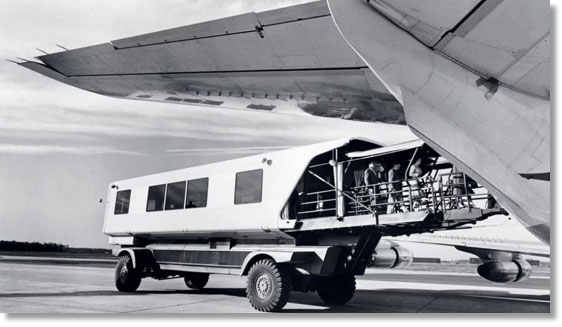
Thankfully this was not my first trip in a 'People Eater' therefore I had some idea of what was required from me so with some aprehension managed to deliver a reasonable ad-libbed arrival brief without making a complete arse of myself.
As we approached the docking point I was approached by CDS who was then General Sir Edwin, now Lord, Brammall. With a twinkle in his eye he said 'If I were you sergeant, I would give those two a bloody good rollicking when you get back to the office. Well done though'. He had obviously seen what had happened as had a smiling CAS, Air Chief Marshal Sir Keith Williamson who with a thank you shook my hand before departing.
No rollicking took place but several pitchers of beer were consumed in the Marriott Hotel bar that evening, all paid for by the extremely good natured Messers King and Patch. One learns valuable lessons from experiences like that.

Subject: Red Arrows.
The safety issues with the Red Arrows support aircraft goes back much further than has recently been reported. This goes back to 1972 July 13/14 actually. Colin Allen (hopefully he can confirm what I say) and I were tasked to be on the Arrows support Hercules back to UK after their practice camp at Akrotiri. The way the Arrows' people loaded the Hercules was, to say the least, not as safe as Movers would do. We were told not to change anything they did but to report back. If a base Movements shift or a MAMS Team, any flavour, had loaded that aeroplane the Loadmaster would have gone loopy and not accepted it. Anyway, we filed a report when we arrived at Lyneham, and if I remember correctly back at Akrotiri, but nothing was heard of it afterwards. So this situation has been ongoing for something around 50 years. Maybe with the A400M they have room to be safer.
We had a nightstop at Grazzianese, Naples, and I will always remember our crew under Flt.Lt. Anderson, Colin and I going to the hotel dressed smartly in KD, and the Red Arrows in their flying suits which they had inhabited for the past 12 hours and probably, days previously. I think they marketed a new fragrance, Odour Flêche Rouge. It didn't sell well.
In the meantime, it's quite sunny here as it has been for the past couple of weeks. There had been some horrendous weather which goes by the name of a "Gota Fria". In this, it rains. Similar to a Far East monsoon times two or three. But not daily. All day for three days or so. Flash floods, and in the aftermath, complete villages obliterated, livelihoods trashed and people losing everything they had. As in most cases, it is the poorest who suffer worst. There are some videos of it on YouTube: https://www.youtube.com/watch?v=d7TJy3nesUI
From: Ian Berry, West Swindon, Wilts
Subject: Re: Dates
Dave Bernard finished as a WO and left the RAF in April 1984. I do know he settled in the Bristol area and actually came to visit me when I was TSO at Lyneham in the mid 90s. Bernie being Bernie he asked me to have some Mercedes spares flown across from Germany for him. I notice he joined the RAF some two months before I was born.
Harry Manning. UKMAMS 13 Jan 69 - 6 Jun 1972. I reckon I replaced him on the Sqn as my arrival date coincides. He left the RAF as a Cpl in March 1975. I too heard that he passed away some years ago, otherwise he would now be 72.
Phil King. Finished off a Sgt and left the RAF in Jan 1976. Whereabouts unknown. he did two tours on UKMAMS Jan 1969 - Dec 1970 and Feb 1973 - Feb 1974.
EXERCISE RANULAR - Was an air defence exercise defending RAF Akrotiri. The deployment began on 2 Oct 1969 and was completed by 22 Oct. Frank does not appear on the Sqn Nomroll until November 1969. He is shown as being at Akrotiri with a team of 5 between 30 Oct - 12 Nov and assisted with the recovery of 1 ACC, 25 SAM Sqn (Bloodhounds) and 16 Sqn (Canberras) back to Laarbruch. He is also shown taking a 4-man team Marham/Topcliffe on a Herc Flight #3629 to recover some AR1 Cabins.
Subject: Dates
Just realising it’s coming up to my 50th anniversary joining MAMS at Abingdon but can’t find my old log book. However, I bet you can find yours?
Did you go out to Akrotiri in October 1969 for a big exercise, which I think was named as Ex Ranular? Can you confirm and if so have you got any dates. Whilst dropping you a line can you tell me if Sgt Bernard, who was my MAMS Sgt back in the day, has joined the internet team? I also had a Cpl Harry? Can you remember his details?
Cheers and thanks for any assistance.
From: Tony Gale, Gatineau, QC
To: Frank Holmes, Stratford-upon-Avon
CC: Ian Berry, West Swindon, Wilts
Subject: RE: Dates
Hi Frank,
Nice to hear from you.
Exercise Ranular - my log book shows that Foxtrot team positioned at Marham in C130 XV300, Flight #3401, 3 October 1969. We must have been there for a while during the mounting phase and recovered to Abingdon via road, as my next entry shows delivering a Spey engine from Brize to Aldergrove on 24 October.
Ranular Recovery - Foxtrot team flew from Lyneham to Akrotiri on Britannia XM640, Flight #6522, 1 November 1969. My next entry shows us returning to Lyneham on Britannia XM660, Flight #6538, 12 November 1969.
Bernie Bernard - haven't heard either from or of him at all.
Harry Manning - haven't heard from him, but something in the back of my mind is telling me that he is no longer with us.
You also had Phil King on your team - haven't heard from him; don't know where he is.
Don Stewart - lives in Lincoln; contact details are on the OBA Member's page:
http://ukmamsoba.org/members_s_z.htm

Subject: That Stone Crusher Job
This isn’t going to be a book review, but the report of a Eureka moment. For a long time, I had been uncertain about some of the details of the 1971 Gulf MAMS epic stone crusher move. But, there it was in Chapter 6, "High Wide and Heavy", page 43. “One of the heaviest single pieces of freight ever airlifted by the RAF was an enormous stone crusher weighing 52,000lbs (with additional back-up equipment bringing the load to 62,000lbs which was humped by XR367 Hercules from Sharjah to Masirah on 27 June 1971.”
There it was ‘the date’ and not September as I had previously thought and reported in an earlier ‘I remember when’ Old Bods Newsletter. The Book went on to record: “The cargo to be used in the construction of a new runway was loaded by a Gulf mobile air movements team.” One of the few (if any) references to mobile movements teams. However, the loadmasters and travelling ground engineers appeared to have been very busy!
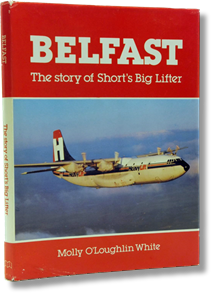
The book also records one of my saddest days in the RAF, the 15th December 1971, when two Belfasts, XR370 "Ajax" and XR263 "Goliath", were the very last two aircraft to leave RAF Sharjah and RAF Muharraq, each with their respective Station Commanders aboard. For the record, our boss, Group Captain Cedric Simon, was the very last to step aboard at Sharjah, following me up the integral steps into the aircraft.
All in all the book is a very good read of the story of the Belfast, its conception, construction, service life and the years that followed in the commercial world up until 1984.
At the risk of a global rhubarb of ‘Hasn’t everyone got their copy of that book?” The other day I was train spotting at Bishops Lydeard during a visit to the West Somerset Railway’s Autumn Steam Gala, as you do, when I happened to see a 1984 book on the Belfast: Short’s Big Lifter by Molly O’Loughlin White, priced at £4.50. In retrospect, not a bad price as I later found it on Amazon at £35 used and £79 collectable. This would appear to suggest that if you want aircraft book bargains go the Society fund raising stalls at Railway Galas and, presumably, for railway books head for the nearest air show!

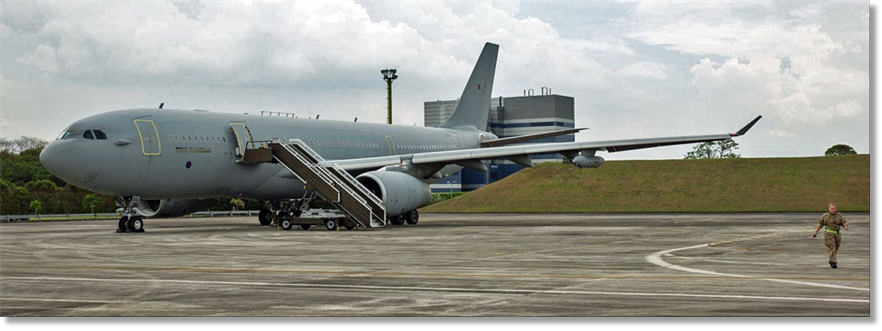
A Voyager tanker operated for the first time from Paya Lebar Airbase Singapore, as part of Exercise Bersama Lima. The exercise is the annual Five Powers Defence Arrangements exercise. The Five Powers Defence Arrangements brings the militaries of Australia, Malaysia, New Zealand, Singapore and the United Kingdom together in the region.
In a release, the RAF say that the Voyager Force aircraft is conducting Air to Air Refuelling sorties with the deployed Typhoons of II (Army Cooperation) Squadron that have also been deployed on the exercise.
“The Voyager’s ability to conduct AAR sorties enables the Typhoon pilots to extend their time in the air considerably. As a consequence, a wider range of missions at considerable increased range can be conducted.”
Squadron Leader Nathan Giles, the Voyager Detachment Commander said in the aforementioned release: “This Voyager deployment is an important step for the force as it demonstrates our ability to operate at considerable range from our home base of Brize Norton and thereby enable the global projection of RAF air power.”
The RAF deployment to Exercise Bersama Lima this year has seen over 200 personnel exercise in the region. This has enabled the RAF Typhoons to conduct complex air activities with the Air Forces of the other participating nations, say the RAF.
UK Defence Journal (c/o Tim Pyne)

From: John Bell, Desborough, Northants
Subject: My First Movements Posting
At the tender age of 21, I was posted from my first RAF unit, Wittering, to my first overseas tour at RAF Eastleigh, Kenya. I left Lyneham in a Comet 2 in August 1962 for Nairobi. After a brief fuel stop at Kano, Nigeria, we flew to Nairobi airport (known then as Embakasi airport but renamed Jomo Kenyatta airport following independence). From Embakasi we were bussed to the RAF Base at Eastleigh. (Now known as Moi Air Base).
I worked on shift with a DAMO, a couple of airmen, a sergeant, Brian Kingscote, and a small team of local civvy labourers. I fairly quickly picked up a basic knowledge of Swahili, necessary to manage the civvies. Our work consisted of a couple of weekly Argosy schedules, a monthly UK shiny and many ‘specials’. Most aircraft came from Khormaksar, with occasional Hastings trainers from Cyprus. We handled a variety of types, from local based Beverleys, Twin Pioneers and Pembrokes, to Aden based Argosies, Dakotas, Valletta’s and UK Comets and Britannia’s. Comets and Britannias came into the civil airport at Embakasi when we would move across with an assortment of vehicles, including a 12,000 lb fork lift truck. This fork lift was not an easy drive and on parts of the narrow track we used it was not uncommon to meet up with different animals, mainly deer but once or twice a lion, zebra, giraffe or a rhino. At the Eastleigh airbase it was routine for the RAF police to go out onto the runway at dawn to chase small groups of lions before the aircraft could land or depart.
The work was varied and interesting. Our AOC, AVM Johnny Johnson, was a keen golfer and occasionally we were tasked to send bags of ‘good’ sand up to Aden for the golf course. Similarly, we would send up boxes of ‘ Kenya Cold’. These were boxes of steak, fruit, vegetables and other goodies for the Officers Mess.
One time the Duke of Edinburgh flew through Entebbe airport, Uganda, in a Heron of the Queen's Flight. At Entebbe one of the four Gypsy Queen engines went unserviceable. A replacement was flown out civil air, the u/s engine stayed in Uganda. I, then a corporal, was tasked to travel to Entebbe in a Valletta and bring the engine back. No Loadmaster on the aircraft. Just two crew and me. Fortunately the Gypsy Queen ECU was not very heavy and the three of us managed to lift it onto the aircraft. That was, I suppose, my first ‘Mobile’ task.
Other interesting jobs included pushing 50 gallon drums of fuel out of the back of a low flying Beverley to a badly flooded Kenyan village, and delivering a large parcel to the British High Commisioner in Zanzibar having been flown there in one of the Eastleigh based Pembrokes. Then there was the aftermath of a tribal conflict in the Northern Frontier District of Kenya when our Twin Pioneers were used to recover dozens of bodies. Not a good experience.
One time in Tanganyika there was a mutiny by local troops and the RAF flew in several hundred British soldiers for on-move by Argosy to Tanganyika to help quell the uprising. This was a secret operation and we were all ordered not to mention it to anyone. The next day the local newspaper printed full details of the operation.
Life was good in Kenya. My daughter was born in the Princess Elizabeth Hospital, later renamed the Jomo Kenyatta Hospital. We were very near the Nairobi National Park and able to visit the local animal orphanage often. We also had the use of a Land Rover provided by the PSI. No charge for this but we had to buy our own fuel.
We could visit the main game parks and see just about all the different wild life. One time we, that is wife, two children and I, were going through some grassland, up a narrow track when we had to stop because there was a large rock on the road. The rock turned out to be a rhino which was not happy that we had disturbed him and started running towards us. High speed reverse and away we went.
Great memories of Nairobi and district. I served at Eastleigh for one year and was asked if I would like to be moved to Mombasa for the remaining 18 months of my tour. The job was half sea and half air movements. I was flown down from Eastleigh in a local based Beverley with my family, my car, my lambretta scooter and several boxes of PEs. In Mombasa I was one of three Movers. The other two being Sgt Peter Skidmore, a really great man, and Fg Officer Harry Lawson, a very nice guy who had previously been a Major in the British Army.
Life in Mombasa was idillic, but that’s another story...

Subject: My First Movements Posting
Whilst waiting for my Senior Movements Course at RAF Abingdon, I was detached to Air Movements at RAF Lyneham as a very junior and wet-behind-the-ears Pilot Officer. I learnt a lot on the day, evening and night shifts as well as handling Comets, Britannias, Beverleys, Hastings and even a Dan Air Lockheed Constellation. The Constellation was interesting as they only had half their chains and I remember we tied down the rest of the load with rope! It seemed to take off all right so it must have been OK.
My big moment came when on the night shift, the duty Air Movements officer went off sick and I was left in charge. There was a Brit leaving for Cyprus in the early hours and in the office was a big box full of cash to be delivered SHOP (Safe Hand of Pilot) and there was another small box manifest as secret and priority also SHOP. I sat with my feet on the cash box so nobody could steal it and until I could carry it on board and had the pilot sign for it. I remembered the other package and took it on board and just stuffed it into the nearest space on a pallet on the aircraft.
I was just finishing dinner in the mess next evening when there was an urgent call to report immediately to Air Movements where I was met by 2 big Military Police and one plain clothes policeman and, fortunately, the duty Air Movements Officer I had substituted for the previous night. He whispered to me that I should say that I was untrained in Air Movements as he left the office. The other package was apparently a top secret spare for a U/S Vulcan in Cyprus and it had gone missing. I was then subject to some very heavy 3rd degree interrogation by the police, but all I said was that I was untrained and had no knowledge of the package. Fortunately, they gave up after a couple of hours but it did result in me getting a very serious bollocking from the senior mover. After that, I made sure that there was always someone senior to me on shift or let the Warrant handle it.
Incidentally, the package was discovered a week later in the back of Air Movements in Akrotiri.

Subject: My First Movements Posting
My first posting was not what I expected as a young 16 year old, straight off the Movements School. My newly qualified Mov Ops mates received postings to Brize, Lyneham & Northolt. My posting was over 15 hours train journey away from the school at Lossiemouth in Scotland. My first thought was, what had I done wrong? The journey was epic. Lots of oil workers on the train to Aberdeen, getting their quota of cans of beer in before embarking onto a dry oil rig for 6 weeks or so. The train between Aberdeen and Elgin, full of whisky barrels and distilleries. Maybe this wasn't going to be too bad after all!
On arrival to Personnel Admin, Lossiemouth, the first challenge was that they were not expecting me, so a quick phone call to Movements revealed that I was definitely not expected by Flight Plans. Another call to Supply & Movements resulted in a rebuff that the establishment was for SAC Mov Controller, not a LAC Mov Op straight from school! Send him home I heard at the end of the phone. Not dispirited, I was given a station map with the suggestion to just go along to say hi.
In 1981, Air Movements Flight occupied a World War II command caravan. My contact, the SNCO i/c, Ken Grant appeared at the door. I gave some apology and confirmed that I was very happy to go back home if not wanted, but Ken persevered with the sprog in front of him and invited me in. Within 10 minutes Ken had worked out that I lived near RAF Lindholme (one of Ken's previous postings), that he drank at the same pub in Hatfield, Woodhouse, where my parents had held their wedding reception and therefore, I could have been a product of his younger days! During this investigation the phone rang. Ken was not in the mood to answer it, so I picked it up. On answering the callers query (luckily someone was looking for Movements and I could respond positively with, "You have the wrong number, try Flight Plans", impressed Ken enough to accept me into the trade. I later found out that I was Bob Simmons' replacement, so thanks for the opportunity Bob.
The posting was a great experience and I worked with some fine people: Dave Sadler; Dennis O'Keefe; Ian Sloan; Dave Wright; Chico Jevons; Kit Kitson; Steve Vigar; and many others. I learnt how to drink whisky -Thanks to Gordon the Customs guy; make Harvey Wallbanger 'tea', barter & trade things like Scotch pies for cane sugar, play 'Uckers' and know what the 'Tufty Club' really means!

Subject: My First Movements Posting
I was very fortunate for my first movements posting as it was to Singapore for two and a half years, 1967/69, on FEAF MAMS.
I can just about remember my first job, it was with a Flt Sgt Ted Parker. We were transporting supplies by Argosy for the Army who were on exercise in Malacca up in Malaysia. Although nervous about completing my first trim sheet since the training course, the biggest problem was keeping the huge blocks of ice restrained as they were gradually melting and getting smaller by the minute!

Subject: My First Movements Posting
My first movements posting was to a similar part of the world, RAF Muharraq in Bahrain, June 1967- June 1968. I remember the signs on the wall in the transit billet: KEEP YOUR HEAD DOWN. The reason being the fans to keep the air circulating were very close to the double bunk beds (no aircons in billets back then); fortunately most of us took heed.
There is one accident I had early one morning as I tried to pull a pallet off a 25K Condec and trapped my foot breaking my big right toe. I spent 2 weeks in the Medical Centre but it never did heal properly and I still feel the pain to this day.

Nowadays of course, H & S quite rightly insist we wear protective footwear, but in those days "bondu" boots were all the rage and offered no protection.

Subject: First Movements Posting
First movements posting was to Bahrain. On my first shift, the outgoing shift NCO briefed me on what was what and what our responsibilities were. On the desk in the middle of the arrivals/departures lounge, which we used as a shift "office', there was a cane with a blackened end. When I asked my tutor what it was, he replied, "We will probably want that tonight".
First arrival was the early-morning flight from Brize. While the pax were being processed, there was a strong smell of burning. "Grab the cane!" my tutor shouted, and ran off to the ladies loo, which was full of smoke.
It seemed a current lady's fashion item was all-in-one tights. As it was very cold at Brize early in the morning , it seemed thick tights were necessary. On arriving at Bahrain however, where it was very hot, the first thing the ladies did was remove their tights and, not knowing where to put them, decided to use the sanitary towel incinerator. Nylon does not burn, it only smoulders. Hence the use of the cane to remove the offending smouldering items! Welcome to Movements front line!
From: Duncan Grant, Trentham Staffs
Subject: My First Movements Posting - DAMO RAF Sharjah 1968 -1969
I exactly met the criteria for a first Movements tour: married, not entitled to Married Quarters and therefore an ideal candidate for a 13-month unaccompanied tour. At least it was at Sharjah and not marooned on an island like some of my contemporaries. There was also the highlight of a month in the U.K. midway through the tour. Les Nelson was the S Mov O. (not SAMO) as the Sqn had a port unit commanded by what was then a Royal Corps of Transport (RCT) Captain.
I arrived two weeks later than planned thanks to a bad bout of sinusitis which stopped me flying. So I was greeted with joy by Messrs Ron McLeod and Brian Shorter who had been holding the fort after the departure of my predecessor Pete Nichols. What to make of my new environment ? Become a recluse between shifts, study for an OU Degree or work hard and play harder ? I selected the final option with all its attendant risks !
The work bit was really straightforward: Argosy schedules from Muharraq through to Masirah and Salalah interspersed with Andover tasking undertaken by 84 Sqn, the resident mini ATF Fleet. Highlights in between these routine tasks was the enjoyment of watching Gulf MAMS sweating hard on Belfast specials, invariably involved with Wessex moves. In turn, the change over of the resident Infantry battalion (in one case the Grenadier Guards) brought the joy of the VC10 and the excitement of betting whether it would have a successful take off run from Sharjahs short runway in the heat of the desert. Fortunately, they always did.
Of course, the shift work endeavours would not have been possible without the sterling efforts of the real workers - the lads... They always looked after me - invariably after a hard night sampling certain types of liquid!
Now to the character building exciting bits that kept me sane! In between shifts, I always took the chance to pretend I received flying pay! The fun invariably involved flights on the Andover jump seat. I well recall two particular sorties. The first was to Shiraz in what today we know as Iran. The other was the joy of STOL events at Fujairah long before it became the hive of activity it is today . The first take off there convinced me the Andover was rising vertically as it reached the end of its take-off run.
Then there was the steely side of the business; on this occasion a 4 hour sortie in a Canberra with a 249 Sqn crew on detachment from Akrotiri. I maintained the honour of the Movers by keeping my breakfast inside me!
A “steely activity” that equalled the Canberra sortie, albeit somewhat differently, introduced me to Surface Movements! What I had expected to be a gentle trip into Oman in a convoy of 3- Tonners pre-positioning Avtur at Firq and Saiq (say that out loud, but it is true) saw me armed with a Self Loading Rifle (SLR) and designated as the deputy Convoy Commander.
The locations were well known to the SAS who in 1969 were “training" in the area. One of their number was a good friend from school days: small world! This mini Lawrence of Arabia experience gave me an instant geography lesson and confirmed that the decision to join the RAF had been the right one. At least I did not have to fight off the locals!
Those who know me will by now be hoping that I will desist from proceeding into auto narration! Fear not! I will conclude with only brief mentions of some other highlights:
Having a local bumped from the scheduled BOAC VC10 to get a Comp A home
My first ever Burns Night
Rugby
Sport Commentaries on the British Troops Sharjah Radio
The joys of Dubai
A hats-on interview by OC Ops Wing overruled by the Station Commander (it was not Movements related and was where I first learned about Provost Officers!)
But I still managed to retire as a Group Captain!
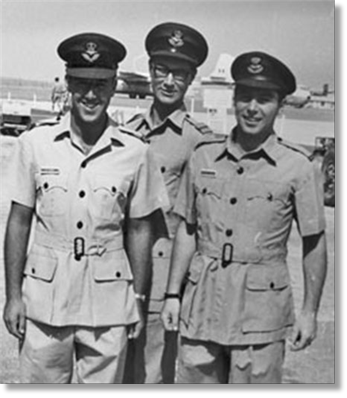
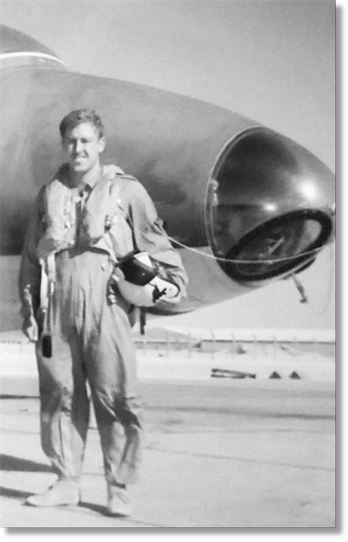
From: Michael Lyke, Belfast, Co. Antrim
Subject: My First Movements Posting
My first mover posting was towards the end of 1980, as a young, wet-behind-the-ears 17yr old, when I packed my bags and headed off to try to find RAF Coltishall, where I was to join the MSF (Mobility Supply Flight). It took a bit of getting used to, especially after basic & then job training. Important supplier/mover bonding sessions held daily, at lunchtime down at the Weavers Inn <cough> who had the most amazing door-step bacon butties as well as a wide range of ales. I remember Chris Keane, Dave Morrow, Skid Marks, AJ Kelly, Russ (Bamber) Parish & Andy Piesse there. These were great days with a definite work hard & play hard philosophy, with a lot of laughs in between.
Obviously, there was nothing in the Air Movements School training about life in an MSF, stock-taking, inventory control or fly-away packs, so it was really like an extension of learning, to be fair. Anybody having served in MSF at Coltishall, I’m sure, will agree the worst job of all, wasn’t painting the FAP tin boxes, or stock-taking and not even the stencilling needed for the boxes, but by far the worst was pulling down the tents from the top of the racking in the barn next door, covered in bird-poo and other biological hazards.
With three squadrons of Jaguars (6, 41 & 54) there were plenty of opportunities to do some proper mover's work when detachments & exercises came around. I was only there for 12 months but saw trips to Deccimomannu (Sardinia) where I celebrated my 18th birthday, Akrotiri and Lossiemouth. It was a real adrenaline rush switching from stacker to mover and getting hands-on with a small team doing load preps (a lot of wheeled cargo) and when Fat Albert or the VC-10’s came in.
Time away on detachments, 1-2 weeks, was slow on inventory or replenishment until load planning was needed for the return trip again.
Because of the small movers team, the social friendships reached in to Jaguar squadron beer-calls and making friendships outside of movements with ATC, medics and even the 202 Squadron Sea King rescue squad, who were very accommodating when it came to joining them for training flights.
One of my closest friendships from there was with a medic and I’m still in contact with him now. After I left Coltishall, I would have returned for the odd weekend or two to catch-up with my pals.
One weekend visit, after finding my way back from The Weavers, my medic offered me a hospital bed for the night, as he was on-call for the weekend and sleeping over there anyway.
I woke up in the wee hours of the morning, heard some swinging doors opening & flapping about, then some footsteps going down the corridor.
Getting up a few hours later, I asked him if he was called out in the middle of the night as I heard him wandering around. He told me he hadn’t been called out and had a long nights sleep getting up shortly before me.
He did explain that the hospital did have a few unusual & regular events and what I heard was just one of them! It was only as I was leaving he told me the single room he put me up in the ward was the resuscitation room where somebody had died a couple of weeks before my visit.
I think that was my last visit back to Colt. Don’t ask me why!
On that note, a seamless link to wishing everybody a great Halloween!!
Take care, good health & god bless!
Spike Lyke


Subject: My First Movements Posting
It was early in the 60’s when, after completing my basic mover’s course in Trenton, Ontario, I returned to Winnipeg, Manitoba to pull up stakes and move to 12 AMU, Sea Island, British Columbia, a "suburb" of Vancouver.
During the moving process, it was decided to sell our car in Winnipeg and buy a new one upon our arrival In Vancouver. This meant we would have to fly 'Service Air' on an RCAF North Star (A C54 transport used during the Berlin Airlift), a trustworthy, ancient a/c and one that held the title of “The Noisiest Aircraft in The World!” If you didn’t wear hearing protection, after a long flight, your balance was disturbed to the point, when back on the ground, you would have difficulty standing erect for some time!
We were myself, my wife and two girls, a 4yo and a 6 month old baby. It was during the last two hours of the flight that my friend, the Loadmaster, Don Mastrianni (“Nasty Masti”), came to the rear, joined us on the troop seats where we screamed friendly banter at each other for a few minutes. He then made the unfortunate decision to hold the baby. Taking her into his arms and, after yelling baby talk at her for a few minutes, decided to hold her at arm’s length above his head. Well, the kid lost the bubble and puked over Nasti’s chin and flying suit, much to the dismay of all. After the kid grew up, they were able to joke about it, but not much.
On arrival at YVR, at about 1900hrs, as we were descending the stairs, I heard a loud French-Canadian voice shouting, “Hell AC (LAC) Streets, hidentify yourself!” I did so. The shouter was long time Sgt, Joe Letourneau, my new boss. He unexpectedly ordered me to, “Put the family into the “Hay MU vehicle and dey can watch you unload baggages from the front belly as Hell AC Fields (Fielding), had called in sick.” I leapt into the breach.
After the aircraft had departed for Comox, we retired to the unit and, over a few beers and introductions all around, I was able to lick and bandage the first of my many “Hunloading Baggages,” wounds.

Subject: My First Movements Posting
This one I can answer pretty quickly. "Join the RAF and see the World" the recruiting posters always used to say back in the day (the days when we actually had overseas stations for those that don't remember). When I finally escaped the Air Movements Training School my first posting was to RAF Northolt in West London. Not such a bad posting except I was born and raised in East Ham in East London, so see the world my arse. I could jump on the central line at Ruislip Gardens tube station and be home in less than hour, making only one change at Mile End for the District Line. Actually it wasn't too bad, if I wanted some laundry done I could just run home and give it to Mum, have a good home cooked meal and be back at Northolt the next day.
Northolt wasn't a bad posting, but of course no "real" Air Movements. Just about all passenger work, 90% of which were VIP's of one sort or another and a small cargo section that mainly handled foreign aircraft bringing in diplomatic stuff. I did meet a few famous people though, the best one being HM the Queen when she flew in a couple of times on the Royal Flight Andovers (HS748). They were good days and more than a few good nights as well!

Subject: My First Movements Posting
My first Air Movements posting was to RAAF Base Tindal, 1996-1999, This was following a gruelling 12-week course at RAAF Richmond where we students gained proficiency in loading and balancing: Australian Caribou DHC-4, Lockheed C130 Hercules (A, E and H Models), S-70 Blackhawk, A15 CH47 Chinook, Douglas C47 Dakota, A20 Boeing 707 multi variants, plus more, as well as visiting, or transiting many other nations' aircraft. Dealing with varied and sometimes difficult loadings were frequent.
During the 1998 flooding of Katherine (20 kilometres north of Tindal), we evacuated near to 3,000 inhabitants and unloaded stores to feed the remaining population. Road trains of food supplies unable to pass through to Darwin were "confiscated" and distributed to local inhabitants.
The Katherine River was 9 kilometres wide through the main street with crocodiles sighted in the flooded areas. The Tindal RAAF base is on a higher elevation than Katherine and was used as a "safe place" for the three Hospital's evacuated patients.
I considered it a privilege to serve my time at Air Movements Tindal.

Subject: First Movements Posting
My first Movements posting was at Changi, 1966. I should have been in Movements in 1965 when I arrived on my original posting, but someone decided I should go to 215 Sqdn., Argosys, as their Gripper.
When OC SCAF, Paddy Burke, found out where I was, he had me unceremoniously dragged into his empire. I wanted Movements. Not to be outdone, I kept tapping away at the dam, and he eventually relented and had me sent to Air Movements, mid-1966.
My first Movs work was at Sleaford Tech., just after my Movements Course. A Britannia arrived to take Cadets on a tour of the States, and the Lady Loadmaster kindly allowed me to do the Trim Sheet, then threw me into the deep end to explain it to the Captain. Moo!
Late 1964, again Sleaford Tech., having set up and running the Mod Store, one of the JP Mods was tip tanks, and we had a shuttle of a Hastings with two or four tanks every few days. And the rest as they say, is history.
Great newsletters, nothing gets done until they are read! Regards to all and keep smilin’.

Subject: First Movements Tour
My first posting as a mover was to RAF Fairford. Being surrounded by all those experienced tradesmen like... Paddy Gibson, Tug Wilson, Jack Dunlop, Chick Hatch and my first mover Cpl, Terry Roberts.
The man who I will always remember was Warrant Officer Mike Earl who was the Sqn WO. Between him and my DAMO, who was an ex VC10 commissioned ALM, Flt Lt Keith David, they managed to wangle a lift on a Belfast training flight to Leuchars for me and an onmove service vehicle to take me to my home address when my mother passed away.
It was also during this posting that I witnessed the arrival of Concorde. It was a wonderful introduction to the family of movers.

Subject: My First Movements Posting
My very first posting notice said O i/c Secondary Accounts in SCAF RAF Changi starting in August 1964. This just happened to coincide with a major force reinforcement of the Far East Command in response to Indonesia getting a bit ‘restless’. In the event, as a very junior and easily expendable bachelor, after a few months, I managed to pick up several detachments which included some movements work, most notably at Gong Kedak. However, my first movement’s task came just a few weeks after arriving and it was technically sea movements.
There was a ‘priority really serious we actually mean it’ need for barbed wire in North Borneo, and there was lots of (old) barbed wire in the depot at Seletar. This had been stockpiled in Singapore for some time, primarily as theatre stocks should UK forces be required to return to Korea. The immediate problem was an absence of spare short notice shipping capacity, and the quantities involved made air-lift a non-starter. The staff solution was for a very green pilot officer (movements qualified) arriving down at the docks in Singapore with a team of locally employed loaders and two Queen Mary lorries loaded to the heavens with very rusty, very old, coils of barbed wire. Waiting for me were the last two sea worthy hulls in the theatre. These were two immaculate fully operational Royal Australian Navy minesweepers. Now as many of you will know minesweepers are basically made of wood, this is to avoid being blown up by the magnetic detonators on many of the naval mines at the time.
So, waiting for me were two disbelieving and now very upset minesweeper skippers and crews who, up until our actual arrival, had thought that their tasking was some form of inter-Service sophisticated wind-up by the Australian Canberra Squadron at RAF Tengah.
Faced with their charges being rendered totally useless by vast quantities of rusty metal flakes shed by my barbed wire during loading and while on passage, there was only one tactical option available to the Australians, to open the wardroom bars while their two once beautiful minesweepers were converted into large rusty maritime hedgehogs.
Notionally, my job was to supervise the loading and complete the shipping manifests. In reality, I thought it would be better for future international cooperation if I joined my fellow officers in their wardroom to commiserate, sympathize, and share in my understanding, and a lot of cans of their beer, of the dreadful sacrileges going on around us. At the end of the morning, I could see, just, that the two long trailers were now empty, from which I deduced that loading was complete, and I then carefully divided the total quantity of coils by two to complete the paper work.
Looking back ont that tour, in terms of movements, in addition to the minesweepers, experience included commanding a not insignificant tactical road convoy, wrecking the 1st Battalion Scots Guards parade square, and handling Dakotas, Bristol Freighters and a train.

Subject: My First Movements Posting
On completion of my movements training at RAF Abingdon, No. 32 Junior Air Movs Course, my first movements posting was to RAF Lyneham in August 1967, on the newly-formed Tactical Air Movements Squadron (TAMS).
A new office was set up in one of the hangars on what was to become 'B' line. To start with there were only a few of us under a young flying officer whose name I forget. Amongst the first airmen to arrive were Keith Parker, Martyn Skelton, Tim Newstead and myself. We weren't too sure what our duties in this newly formed section would be. At first we familiarised ourselves with our new aircraft, the C130. At that time, the aircraft had not been fitted with a winch or roller side guidance system; these would appear later, if my memory is correct, as Beverley role equipment which was modified to fit the C130.
As the section grew, we were split into two shifts, One under Sgt Pat South and the other under Sgt Brian Speller. It became our task to move the newly arrived 25K Condec to all movements sections around the globe, which gave us some real work to do! Other times we would help the station movements section when required.
During my time on TAMS, we had to move location twice, first time into a little house just inside the Goatacre Gate area. It was coming up to winter and there was no heating in the building, so we improvised.
Out the back was what we thought was old scrap timber, we made firewood out of it and used that in the fireplace in the building. Shouldn't have done that, apparently it was on someone's inventory. Oops! Next move was into purpose-built rooms in another hangar on 'B' line where movements offices and crew room were set up under the command of Sqn Ldr Lim. My first Movements tour gave me an easy introduction to the trade and set me up for my first overseas tour to Gan in 1969, plus many memorable years in meeting and working with fellow movers, in different locations around the world.
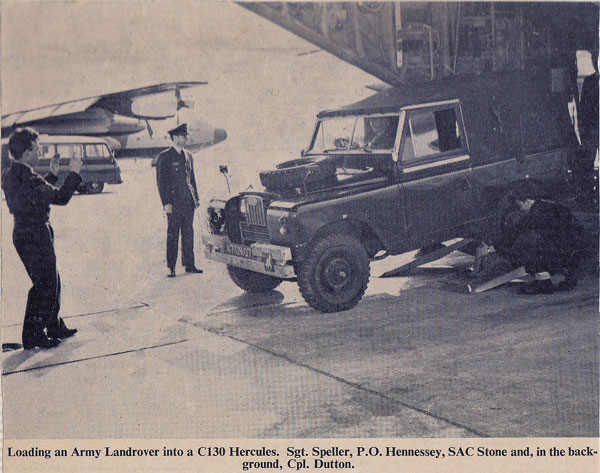
From: Dave Green, Huntingdon, Cambs
Subject: My First Movements Posting - RAF Brize Norton and the Shiny Fleet
My movements career was relatively short, starting off as a DAMO at Brize Norton with the shiny fleet in 1980, before a 6 month sunny holiday in Belize as OC Movs and Stockholding in '83. These tours were extremely formative and were an excellent grounding before I moved onto Tactical Supply Wing in the fuels environment and later I.T. tours and an exchange posting in the US prior to the inevitable staff tours which though interesting, were ultimately far less rewarding.
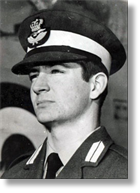
My Brize posting was also my first tour of duty in the RAF as a fresh-faced, wet-behind-the-ears 19 year old. For my first 6 months as an Acting Pilot Officer of D Shift, I was the lowest paid member of the shift and based upon capability at the time that was probably correct. Obviously I was extremely dependent upon my Warrant Officer for guidance and Eric Batty and later Dave Gutsell both did a great job in this respect. There was a fantastic depth of experience and support across the Movs Sqn at the time with Terry Pemberton-Pigott as SAMO and the likes of Kit Ayers, Pat McKenzie and Doug Thompson providing day shift support. DAMOs I recall include Ian Mumme, Doug Clark, Arthur ‘Chalkie’ White, Wendy Walsh, Gordon Thompson and Angie Reid (Green).
I was at Brize for the whole of Op Corporate and if I ever see palletised fresh vegetables again it will be too soon! This was a very eventful period and it was also an excellent learning experience for a brand new RAF Officer, where time and management skills came to the fore. When one of your traffic Cpls says ‘Boss, why don’t you F*** off back to the passenger terminal and let me get on with my job’ there are 2 ways forwards, and one of those could be career limiting for the Cpl. As it turned out Paul Van Aardt, in his inimitable fashion was quite right and I legged it back across the pan! We are still firm friends to this day by the way.
We had a couple of very interesting jobs, the first of which led to a diplomatic incident and a VC10 crew being arrested in Montevideo. This was mostly down to a Sqn Ldr Engineer whose sole role in life that day was to escort a box of Shrike missile spares to Ascension so that they could be air dropped by Herc to HMS Invincible. On arrival at Ascension, the VC10 became a Red Cross aircraft to deliver medical supplies to a hospital ship off Montevideo.
As you can probably guess, the engineer didn’t say anything about the munitions of war that remained on the aircraft as it departed skywards. I in the mean time had a motorcycle accident and after an operation under general anaesthetic, woke up in RAF Wroughton hospital, to the news of the crew being arrested on arrival in Uruguay. Whilst not directly mine or my shifts fault, I got a one-sided chat with AVM Hall (AOC 38Gp) luckily solely on a lessons learned basis.
The second memorable event was when a VC10 that we dispatched arrived at Ascension full of Sea Skua missiles that were armed! Several visits by P&SS staffs trying to work out who removed the arming pins tends to focus your attention on the actions we took that day.
However, when I spoke to the VC10 Air Load Mistress on her return to the UK, she was more worried than I, as she had a pocket full of safety pins that she had removed. Each had a tag on them saying ‘REMOVE BEFORE FLIGHT’ Luckily no harm was done.
My shift was a sterling bunch with the likes of Cloggy Van Aardt, Marty Armstrong, Kev Holmes and Vick Hopper on traffic with some great airmen such as Chris Carlin and Tony Stock.
However, there is always one bad apple and my ‘Walter Mitty’ airman was stealing mail and cheque books from the shift mail racks and was caught selling sleeping bags that were destined for the Falklands on Carterton market. The RAF Police got involved and Vic Hopper and I attended a room search (I was OIC block) for said individual.
The place was a complete mess and I gave him an hour to sort it and be in his highly pressed No.1 uniform for a follow on inspection. An hour later I came back to 2 notes pinned to his room door, one to me and the other to his mother. He apologised for his actions and said he was going to commit suicide.
As it turned out he made off to London in his combats with a large bowie knife and was arrested by the police trying to cash a stolen cheque in a Lloyds Bank branch using a matching stolen Brize Bowling pass for ID! Having put me through 3 days of soul searching and mental hell he then had the temerity to ask if I would be his Airmen’s friend at his Courts Martial, I think you can guess what my answer was!
This was a fantastic tour working with a great bunch of guys. It was certainly a firm foundation for 25 years service in the RAF and a further 16 as a Civil Servant in the MoD.
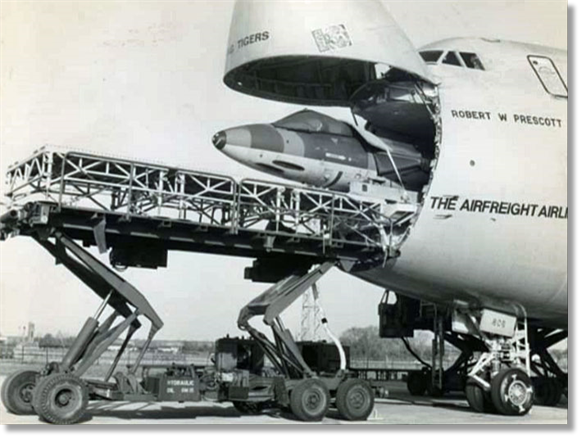

Subject: My First Movements Posting
Well, this brings back memories, and this was in the days when Suppliers at sometime in their career had to fulfil a Movements posting. After 17 years as a Supplier I then considered myself very fortunate not to have been selected for such an appointment. Thus, I eventually found myself, a sergeant, having to attend RAF Abingdon in November 1968 on No.101 Senior Air Movements Course.
This course was followed by a posting in July 1969 to RAF Muharraq for Air Movements duties with “B” Team Gulf MAMS. I have explained in a previous Newsletter that I could not understand how a SNCO with absolutely no previous movements experience could find themselves in such a position, but what better way could there be to spend a 13 month unaccompanied tour?
To conclude, on arrival I went to meet the team who were inbound having been away on a task, when the team and I was completely taken by surprise by the team leader, the late Flt/Lt Barry Belton, held his hand out and said "Hello John, how are you doing?” Barry and I had been Supply NCOs in 1959 at RAF Eastleigh, Kenya.
In my opening statement I said how fortunate I had been at missing out on air movements duties, but the MAMS posting changed that. All of my following postings were for Air Movements duties until my retirement in May 1988, and I found them more acceptable than being stuck in Supply!

Subject: First Movements Posting
In December 1960, as a raw recruit, I commenced training at RAF Kidbrooke as a Clerk Air Movements. On completion of the course, in January 1961, we were all assembled by our instructor, Flt Sgt Stone, to receive our postings. Most headed for Lyneham, Nicosia, El Adem etc., and when it came to me, the Joint Service Continental Booking Centre London (JSCBC). The Flt Sgt advised me that he had no idea where it was located and that nobody from the school had ever been posted there. I was to be parented by RAF Hendon, where I would get further instructions.
JSCBC was located at 3-5 Great Scotland Yard, Westminster, in the building which was the Central London Recruitment Depot for the Army and also the home of the Garrison Sergeant Major London District. The GSM was the chap who coordinated The Trooping of the Colour and other London ceremonials and was rated next to "GOD" as far as the Army were concerned; a rather daunting experience for a young AC1 straight from training.
The unit was formed in the summer of 1960, ready for the commencement in October of the first charter air trooping services to Germany. The Army element were Royal Engineer Movements Branch (later to be RCT and then RLC) staffed by a Major, Captain, WO2 and four ORs. The RAF contingent were Flt Lt Murphy, Sgt John Jennings and two LAC National Servicemen seconded from Lyneham (they left shortly after I arrived).
The Air Trooping services were operated by Silver City Airways using Hermes aircraft flying from RAF Manston to Wildenrath (2x weekly) and Dusseldorf (5 x weekly). All passengers had to report to Platform 9 at Victoria Station for a train to Margate which had reserved coaches for the military. Along with an Army Sgt, SAC Paddy Mcdonagh had the unique job of documenting the passengers on the train whilst travelling to Margate.
In the Booking Centre, the Army operated the Dusseldorf desk whilst I dealt with Wildenrath. I was later joined by Cpl Dave Barton, then a supplier, who was on a compassionate posting to London as his young daughter was undergoing heart surgery. Bookings were received by means of an FMOV562/563 and transcribed (by PENCIL!) onto a Flight Booking Sheet. They were then finalised the day prior to the flight and typed up as a manifest.
It was a unique start to a thoroughly enjoyable 30 year Movements career .Commuting daily on the tube from Hendon was a bind but the perk of having an annual season ticket allowing me free travel all over London was very useful! In addition, we were walking distance from the Nuffield Centre and, as the older amongst us would remember, they gave out free tickets to the best London Shows at 5pm daily.

From: Peter Bessant, Chorley, Lancs
Subject: My First Movements Posting
I returned to Muhurraq in October 1969 but this time not as a supplier but to the Air Movements Squadron a much better prospect. My sergeant was Dave Yeoman, one of the nicest blokes you could hope to meet or work for. Our Sqn Ldr was Dave Gamble who had been my boss at St Athan; not sure if he was pleased to see me. My tour there was fairly eventful ranging from boxing, boozing, being arrested by the RAF Police Special Investigations Branch (SIB) and several pranks.
Boxing: I was part of the Gulf boxing team that was due to take on the Army and Navy in Bahrain. The Navy pulled out for some unknown reason (possibly because we had beaten them previously in Muharraq?) so it was RAF versus Army. I remember climbing into the ring and looking across and nearly getting back out again! I said to my corner man, "what the hell is that? He can't possibly be a bantamweight, he's bloody huge!" "Ah don't worry mate, he's just fat." came back the reply. Turns out he was not quite right, the bloke was more like a lightweight but thankfully he was slow and it was all over in the second round when I landed a lucky goodnight punch. Turns out the poor sod had been press-ganged into it and had to shed a stone to try and make the bantamweight limit, lucky for me.
Run-in with the SIB: Those who had experienced the joy of Muharraq will remember that the RC church was more or less next door to the NAAFI. One night, some charming chaps decided to break in and trash the place. As a result the RAF police started to investigate but someone higher up decided it should be handled by SIB. These highly intelligent beings arrived from Cyprus and immediately started to make waves.
They decided that as blood had been found at the scene that whoever had done the nefarious deed would have cut marks or healing cuts on their hands, so they would check all other ranks for said healing marks. Next morning I was coming off nights and going to the mess to get some food prior to getting some kip. I am accosted by one of these bright boys who wants to look at my hands and he promptly tells me I am under arrest for above said crime as my hands showed cut marks that were barely healed.
I was taken to the guardroom where I was surprised to see other movements personnel also under suspicion of said crime. The Sgt RAF police was shaking his head and trying to explain to the boss SIB man that he was barking up the wrong tree, and that if he cared to do some digging he would find that they had grabbed only movers and R&D storemen and he obviously didn't know what we worked with and how we would have cut marks on our hands. It was highly obvious that the numpty had never worked with lashing tape to secure a load. Needless to say we were all released without charge and SIB scuttled back to Cyprus. We are still waiting for our apology.
Can't say too much about pranks other than I'm sure some of the lads who were there in 1970 will remember Sqn Ldr Gambles face when he came out of the pax terminal and found his fiat neatly parked between two concrete bollards with no room to move. My next meeting with him was at Lyneham when he was OC MAMS; unfortunately he hadn't forgotten! Dave Yeoman, if you're reading this, I still haven't forgiven you for scaring the poop out of me when you fell asleep at the wheel of the Land Rover as we were going across the pan in the fog on nights. How the hell we missed the light gantry I will never know.
From: Mike Stepney, Stewarton, East Ayrshire
Subject: My First Movements Posting
My first real experience of hands-on air movements (not a posting), was at RAF Khormaksar Aden when I was seconded, along with many others, to assist as movements re-force during the Rhodesian embargo in 1966. Although I was working at 41/131MU Khormaksar, a number of us were called on to assist, predominately working on Brits loading multiple freight items including load after load of 45gal drums of fuel, in temperature in excess of 100+F. We also loaded other aircraft as and when required. I particularly enjoyed the teamwork and banter of the movements guys, and decided that I would try for the movements qualification as soon as practicable. Unfortunately, I knew that I would have to wait until I returned to UK to follow up on this aim.
Posted from Aden to RAF Leuchars in December 1967, and earmarked for POL, over a period of a year, I was sent on a number of specialist courses covering, fuel handling, LOX handling, compressed gasses & explosives handling, HGV and RT FLT license and various other courses to enhance my Supplier knowledge. When requesting on my annual ‘dream sheet’ that I would benefit from movements training my boss at the at the time, advised that I had been away on so many courses since arriving at Leuchars, he wanted some return from the qualifications that I had earned before granting any additional training. Therefore, a movements course was put on the back burner.
I had all but given up on the movements route when in late 1970 I was advised that I was being posted to a movements unit the following April. JSPU Famagusta was the unit, which was run under the badge of 59 Port Sqn RCT (re-badged to 10 Port Sqn RCT in June 71). I could glean very little information on the unit other than my explosives handling and HGV qualifications appeared to mark me out as a candidate for the post.
The unit was reasonably easy going, and appeared to me at first almost too laid-back, after the hectic 3 years Leuchars tour. However, I was extremely pleased to be out of the TACEVAL and security exercises arena, and very happy not having four Victor tankers drop in at 16:00 on a Friday with empty tanks, which meant another very late Friday finish!
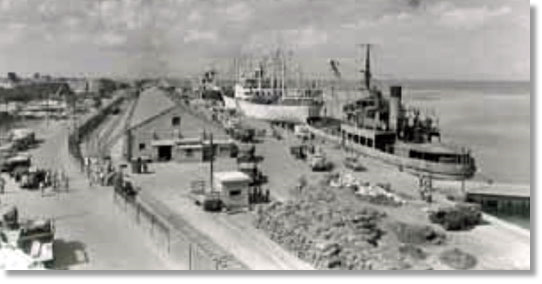
Famagusta Military Port, Cyprus (picture circa 1950's)
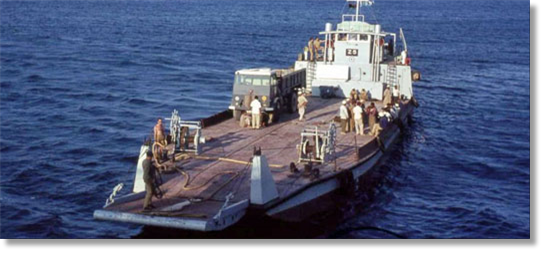
JSPU Famagusta hours were 07:00 until 13:00 with a staff of around 35, mainly RCT and REME and headed by an army major. There were four RAF types; Flt Lt Pat O’Donnell, FS Ron Markwick, Cpl Ian Land and myself. My actual job title was RAF Surface Movements (Freight) Cyprus, with responsibilities for the movement in and out of Cyprus of all freight deemed too large/heavy or of low priority that it was not considered for air move. Unlike an Air Movements Sqn, we did not actually physically handle any freight; that was left to the docks stevedores who did all the loading and unloading of non-hazardous freight at the civilian dockside. Locally employed labourers employed by the MOD then undertook all the transhipping tasks within the unit. Standard ISO containers were not evident in any great numbers at this time so most freight was ‘loose’ loaded. My main tasks were ensuring that all the supporting shipping and customs documentation for both inbound and out bound consignments was in order. Although predominately a desk job, I did have a couple of aces up my sleeve that got me out and about quite a bit; the in date explosive handling qualification and the HGV license helped. In addition, the RAF supporting General Office was at RAF Nicosia, and as the junior RAF rank, I soon became used to making the usual twice weekly journey to Nicosia and back. I did not complain as the unit hire car was a 1968 3.3ltr straight six Vauxhall Cresta complete with front bench seat and a 3 speed column gear stick with manual overdrive. I can guarantee that that car could top 100mph, and regularly did on the straight stretches of the Nicosia road!
Civilian freighters and RFA vessels would arrive with general and hazardous cargo, including explosives, for the various UK military garrisons. Local Cypriot regulations would not allow the landing of explosives onto the civilian dockside. In addition, the port unit did not have sufficient space or depth alongside to tie-up large civilian freighters, therefore when receiving a consignment of explosives (usually every two or three weeks), we would be required to motor out to the ship in Famagusta outer harbour to check the manifest and location of the explosives. We would set up the required RPL (Ramped Power Lighter) or Z-craft and head out to the freighter.
As an aside, a Z-craft, for the uninitiated, is a large flat-bottomed mexefloat lookalike, with a permanent wheelhouse/accommodation/ galley/engine etc., at the rear supporting about 10 crew and pax. I believe that the RAF Z-craft at Famagusta (operated by the army) was the last surviving vessel of this type in the British forces. For off-loading, the landing craft would motor out and tie-up alongside the freighter. Using the ships derrick, the explosives would be offloaded and ferried back to the JSPU. Handling at the JSPU end was reasonably simple using an Eager Beaver rough terrain FLT transferring the freight from the RPL/Z craft to waiting military trucks. Once they drove out the unit gates with their military escorts, we were receipt complete! Due to our proximity to the civilian dockside, we were not permitted to hold explosives overnight, so no guard duties during this part of my tour!
We also had interesting days when we had to dispose of out of date explosives. Load up the RPL then motor out to a designated munitions dumping area about 10 miles off the Cyprus pan handle. There was usually a competition to see who could make the biggest splash when rolling a time expired bomb from the FLT tines into the sea - never a dull moment!
All work and no play was never an issue on the unit. There was an all-ranks club where those with the rank of Cpl and below took turns in running the bar pretty simple really as we only served beer in cans, and spirits were duty free, so pretty much half and half with whatever mixer was required. We had a regular get together most days after work, and every couple of weeks or so we would have a cinema or theme night. About once a month in the good weather the RPL would take us all including families, down to Fig Tree Bay, which was then a deserted stretch of very sandy beach not easily reached by vehicle, but nowadays, densely populated with hotels and bars! Skipper would run the ship onto the beach and lower the ramp whereby we would all trip off with our sun beds and brollys, and enjoy a days swimming and snorkelling, getting called back on board when Costas, one of the best kebab cooks ever, would serve us our lunch. As the sun set we would reverse the ship out from the beach and motor back up to the unit, tie up, then wander home to recover. It was a tough life... but someone had to do it!
All good things must come to an end, and it was with some great disappointment that in mid-1972 my post was disestablished; I was cross-posted to RAF Episkopi for the remainder of my 3 year tour. I was not that surprised that the post was disestablished as the job itself was not what I would call full-time, but I certainly enjoyed my time at JSPU Famagusta. Shortly after my return to UK from Episkopi, the JSPU was caught up in the middle of the Turkish invasion of July 1974, and 10 Port Sqn was, I believe, eventually re-sited to the Mole at RAF Akrotiri.
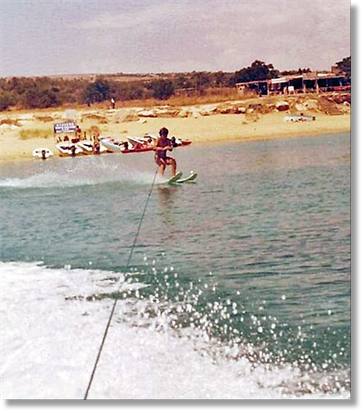
Fig Tree Bay back in the 1970's

Subject: My First Movements Posting
Tony, I was on the same course as you (21 JAMC) and like you I missed Khormaksar, going to RAF Labuan in Borneo instead. As a first tour it was brilliant. We handled Argosies, Beverlys, Hastings, Twin Pioneers, RMAF Caribou and Whirlwind and RMAF Allouettes. We also had a communications flight of two Varsities and a Pembroke.
Everything was flat floor loaded and manhandled. Our handling aids were a covered Bedford RL for baggage, a flat 5-ton trailer for freight and a 6,000lb diesel fork lift. Thankfully, Health and Safety did not exist, just plain common sense and good guidance. Remove cased a/c engine from Hastings: slide from the front to the door, turn in the doorway and jack up the low side to level it and insert the forks. Two chains from the top of the mast onto the box and tilt back. Reverse slowly and put down as soon as it was clear.
I also managed a couple of trips on the resupply drop Beverleys which were loaded by the Army Air Despatchers. To stand vertically, strapped in and watch 100ft+ trees go past sideways as we turned for another run had to be seen to be believed.
We did have a Trianco tranfer loader but because we never had palletised loads it was never used. The Ground Equipment chaps used to take the covers off it once a month and run it up and down, grease it and put the covers back on. I learned more about manual handling in the year I was there than most people learn in a lifetime.
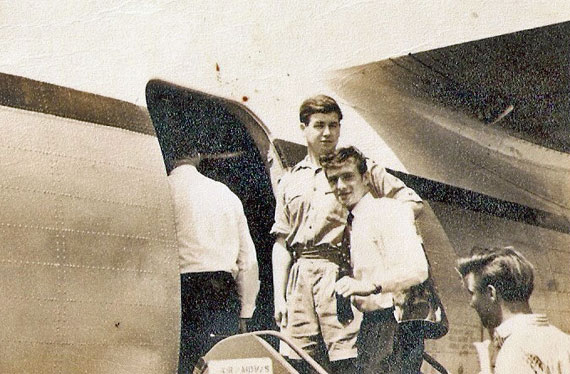

Subject: My First Movements Posting
In August 1977, as a brand new LAC Mov Op, from the first Operator course in over 3 years, I was posted to RAF Lyneham. My first choice had been RAF Wyton, as it was close to my home in Cambridge. As it happened, being posted to Lyneham as an "S" Reg Mover was a great first posting. Due to the lack of promotion there were a lot of senior SAC's, with a vast knowledge to pass on to a young sprog.
I arrived at Lyneham along with Geordie Rochester (C Shift), Tony Prout (A Shift) and I went to D shift. My shift rotation was on second days, so I started my first shift on nights the following evening. My first section was on Cargo with Cpl John Calver, SAC's Jim Alexander and Joe Howard, after a couple of months I went on to traffic. When Bruce Oram and Willy Crossley came across at different times from Mobile for a short stint on shift, they took me under their wing, teaching me a lot about being a Mover. In August 1978 I was posted to RAF Wildenrath, I left D Shift a little apprehensive going to another squadron overseas after such a short time of being a Mover. I needn't have worried; I went on to shift at Wildenrath with another team of great Movers with a vast experience.
I will always be grateful to the first bunch of Movers I worked with, which started me on my journey of over 24 years in the Air Movement trade. Here are a few other names I recall from my time on D shift Aug 1977-Aug 1978: F/Off Ron Elliot, WO Derek Pilkington, Sgt Tam MacDonald, Cpl Ron Curry, SAC's John Pukiss, Al Verth, Min Brown, Bob Brown, Brendan Keogh, Nev Witham, Pete Brotherhood and Mick Alexander. I apologies if I left anybody out from that era, but I am surprised I remember as much as I do after 42 years!
From: Gordon Gray, Allestree, Derby
Subject: My first Movements posting
Immediately after Supplier 1 training, my job was in EPAS (Equipment Provisioning & Accounting Section) at RAF Valley (Anglesey) working on manuscript F1640 ledgers for Gnat trials aircraft parts. One of the first daily jobs was to clear ashes from the stove, light the fire and get the kettle on. Mind you, it was January '63, an appalling and freezing winter.
12 months later, I was put on PWR (Preliminary Warning) for an overseas tour and then within a couple of weeks I was detailed for the Movements Course at Abingdon in March 1964. Not long after the course, PMC Gloucester (was it called that then?) drafted me to another island, Gan, in the Indian Ocean, effective that November.
Terry Foster, another Mover on posting, and I flew from Lyneham via El Adem and Khormaksar on a 216 Squadron Comet 4C. Arriving at Gan, we were met by a Cornishman, Roger Nancarrow (I met Roger again at St Mawgan, many years later in '82) and he took us to the Transit Hotel reception (Blue Lagoon?) then on to our accommodation opposite the 180 Club, very close to the west end of the runway. The billet was occupied by Suppliers and just a few Movers, most of us were already acquainted.
On introduction to the Section by boss Flt Lt Filbey, I was given the job of Freight Clerk on days; Terry Foster being allocated to Ration Clerk on shift as he already held a F1629 (RAF driving licence). Not too enamoured with the day job, I pestered the boss enough to get myself on shift as a Trim Clerk.
As soon as one Peter Bylett arrived and had a quick handover from me on Freight, I was thrown in the deep end one evening on the daily Britannia en route from Changi to Lyneham via Muharraq and Akrotiri. Trepidation believe me; my first 'live' trim, with an onload of a u/s Proteus engine for Lyneham which necessitated a partial re-role, and my rather unhelpful Cpl (who shall remain nameless) i/c of me and the Maldivian loaders. After that baptism, life was pleasant but always a challenge, as 'Transload' signals seldom accurately matched the call over from Air Traffic Control details passed from the aircraft on finals
There was always a welcome to Changi guys on reinforcement, when Gan Movers were needed for scheduled offloading of the Cargo vessels at the MCU jetty. Not only fresh company in the 180 Club but useful in bringing shopping unobtainable in the NAAFI shop. A favourite at the time being £5 Seiko watches along with those coloured plastic watch face sun protectors.
I still have to this day the pocket metal slide calculator that 'Sarge' Willy Hamilton brought me from Changi. Another favourite were cheap car coats. The AQM's took some convincing though, watching me use that calculator.
The V Force staged through on various Operations, visiting FEAF and NEAF Argosys, the Royal Navy calling in to pick up mail and play soccer, weekly British Eagle were on charter, (one digging up the golf course during a squall) the monthly Hastings to Karachi, with alternate months staging via Katunayake, all were somewhat a diversion from our 'bread and butter' which was Transport Command. Life was pretty hectic but idyllic with much on offer to occupy off duty hours. Later in my tour I remember the new addition coming into Service, Belfast lumbering in for a short stopover.
This, my first Movements role I was lucky in my location compared with contemporary's elsewhere; the next move was bound to be back in Supply. But no, it was Brize, just months after USAF had departed. Then after four years, back to ESG Supply at Luqa Malta in '69.
I remember Brian Loxham whom some OBA members will have known (RIP Brian) quizzing me about Movements at the time of assimilation in '72 when that opportunity arose; (at the same time Prime Minister Dom Mintoff ejected British Forces from the island). Brian had never been on the other side of Trade Group 18 as some of us, but we both did assimilate and I am sure never regretted the move.
Fond memories of those characters, places and aeroplanes.

Subject: My first Air Movements Posting
In August 1968 I was stationed at RAF Fairford, Supply Squadron, when I received an order to report to RAF Abingdon for Air Movements Training on No.50 Junior Air Movements Course, commencing September 1968 which lasted about three months. Having completed the course I was sent back to RAF Fairford to await an Air Movements posting which to my surprise and delight I was posted to the Fairford station Air Movements, in Load Control and completed my very first C130 trim sheet, was I nervous! I then moved around a bit, I was on Traffic for a time then moved into the Pax department until my next tour after two years (a) Fairford was closing in Mar.1971. (b) I replied to a signal from Air Forces Gulf for three volunteers for Gulf MAMF - a very enjoyable tour.

Subject: My First Movements Posting
In February this year, I completed my Phase 3 Movements Training at RAF Brize Norton and was posted to RAF Northolt, as the Duty Air Movements Officer. Having grown up in High Wycombe and joined the RAF to travel and get away from ‘the nest’, I was moving a whole 25 minutes down the road…!
Unsure what to expect, I arrived on day 1 and was immediately absorbed in the VVIP movements. Quickly learning how to meet and greet all sorts of VIPs including the ex Prime Minister Theresa May, members of the royal family; Prince William and Kate, Prince Charles and even the Queen of Spain! Being surrounded by so many influential and powerful individuals was (and still is) surreal.
My time at Northolt quickly became a regular commute to RAF Benson due to Op BOLTHOLE – the resurfacing of the runway at Northolt. The build up to this was immense - numerous planning meetings and practice runs until the day finally came for our first VIP move from Benson. The Prime Minister, Mrs May, was flying to Northern Ireland for an extremely important event that was live on the BBC. All was going to plan – the lounge was ready, the security was in place, we movements staff were waiting. Being day one at Benson, we had all eyes on us! We received the call to say that she was at the gate and on the way (albeit 20 minutes late…). Security arrived, the primary vehicle arrived, all passengers were ready and on board the aircraft. ('Just one last task of getting the PM on board, saluting the aircraft and all has gone well’ I thought). As I completed this and walked away towards the crowd of people watching I heard the engine start up (a good sign). However, very shortly afterwards it shut down, ‘uh oh’ I thought. My very first U/S aircraft… of course it had to happen on the first day of BOLTHOLE and with the PM on board with a host of people watching! Very quickly we had to move all passengers and the PM onto the backup aircraft as well as all cabin crew requirements and aircrew! The urgency was particularly important as they managed to arrive in Northern Ireland with just 2 minutes to spare before being live on TV!
Since that we have experienced the change in parliament with Boris Johnson becoming Prime Minister. With the ongoing tasking of BREXIT, the number of last minute flights increasing. It’s amazing to be so closely involved in work that will ultimately affect the nation. The runway at Northolt is now back up and running, so we are looking forward to the tempo of flights increasing with international and civilian flying returning. In the New Year I will be moving to the OC Civil Airhead Duties (CAD) role here at Northolt, a new and interesting step in my first movements tour.
From: Len Bowen, Chisholm, ACT
Subject: My First Movements Posting
BORNEO DAYS (DAZE?)
By the time I was AMS-qualified, ‘Confrontation’ was in full swing. As a result, when we were asked where we wanted to go after the Abingdon course, I said “Borneo”, and my No1 mate, (then) Pilot Officer ‘Jock’ Drysdale said “Aden”. We were the only two on the course who got our posting of choice; all the rest going to Lyneham, Colerne or staying at Abingdon.
RAF Labuan (‘Lab’), an island off Sabah – formally British North Borneo - was then a very busy Station in mid-1965. There were two Whirlwind squadron detachments from 110 and 103 Sqns. a Belvedere detachment from 66 Sqn, Javelins from 60 Sqn and Hunters from 20 Sqn and we also had two Beverleys rotated from 34 Sqn; all from Singapore.
Occasionally we had an Argosy from 215 in lieu of one of the Bevs and we always had a couple of Shackletons as well, plus Army Air Corps Beavers from Brunei, our own Communications Flight Valetta and a Pembroke. Later we also had the Royal Navy 848 Sqn Wessex and the Aussie Sabres over Christmas 1965 plus we had the Royal Malaysian Air Force (RMAF) Single and Twin Pioneer Squadron. There was also had a daily schedule service from Singapore, either a Hastings or an Argosy, plus RMAF Heralds in and out at odd times and the occasional charter flight by British Eagle Britannia and suchlike. Very busy, however the working hours were normally limited by weather and light.
I arrived at Lab on 4 Aug 65, and found that I was working ‘Day On / Day Off’ with one other Duty Air Movements Officer (DAMO). Because there were few strips on the mainland with lights, and also because of the daily afternoon weather build-up ‘Up Country’, there were few ‘after hours’ movements from the forward area, and our Day On was generally finished by 1800 – 1830 local time – about beer-o’clock in the Mess before dinner. Very civilised, and what Neil Davies, the famous Australian combat cameraman called “The last of the gentlemen’s wars”.
My AMSLAB team was a mix of RAF personnel and some local Iban & Dyak labourers, of whom more later. My Shift SNCO was Sgt ‘Nobby’ Clarke. Nobby had been a very young AC in a Stores Depot ‘somewhere in India’ in 1943, and had seen a Routine Order asking for volunteers for ‘special duties’. Unwisely he volunteered, and three months later he was working at one of the forward air-heads behind Japanese lines with Wingate’s Chindits. Nobby was therefore the classic SNCO to help a young Pilot Officer ‘play himself in’ in the Far East, and for my first few months at least at Lab were made up of…. “Well, Sir, we could do it that way, but have you considered….?” Of course he was (almost) always right, and I knew I’d made the grade when after about four months, following a unusually hard 18 hour day including an after-hours British Eagle charter Britannia full of Ghurkas and their families heading for Hong Kong, I was invited back to the Sergeants’ Mess Beer Garden “for a cleansing ale” and was introduced to Nobby’s Snake Pit mates as “my young boss”.
Back to the daily routine. I quickly found that the usual Day Off options were: a) lying on the beach; b) sleeping; c) drinking; or, d) a combination of all three. My Scots complexion’s reaction to sun & sand quickly showed me that a) and b) were out, especially when mixed. This in turn eliminated d). c) was fine on occasions, but with One Year Tour even my idiot youth knew that my 20 year-old liver could not hack that mission. So what to do for 24 hours out of every 48? Answer: Go flying! - And I did. On every possible chance I could get, and with every crew that would take me. Later on my interest in, and reasonable skill with firearms saw me flying (highly unofficially) as ‘Safety Pilot’ on 103 and 110 Squadron Whirlwinds, but initially it was as ‘super-cargo’ on 215 Sqn Argosies and 34 Sqn Beverlys, doing air drops at such exotic places as Bario, Bakalalan and Pensiangan.
My first Bev AD was with Flight Lieutenant Hugh Crawley, on 29th August, when we dropped 8 x 1 Ton Containers of AVTUR at Long Sumado. (Photo 1). I say ‘we’ dropped the Containers, but I was simply an amazed passenger hanging on for grim death with one hand and wielding my brand new Pentax SV camera with the other while the Air Dispatch boys did their thing. Much later, I had ‘graduated’ to being an experienced up-country chopper support crew-member (photo 2, RMAF Alouette III, 21st May 1966 – what a difference eight months makes ), but that is really outside my normal AMSLAB story.
Our locally-employed civilian labourers are worth mentioning. Largely drawn from two of the floating Dyak villages in Victoria Harbour, they were initially unskilled ‘hernia power’ to augment our RAF AMS-trained staff, but after several years with the British, they was as good as any ex-Abingdon-trained airman. Their hierarchy took some getting used to. The ‘foreman’ was notionally a young bloke who could speak English, but he was educated and also from the wrong clan, so in actual fact the power was the equivalent of the ’shop steward’ and village head-man, Pieut. He was short, stocky, built like a brick out-house, had about three teeth left in his head and never wore anything other than khaki shorts, a filthy white(?) singlet and flip-flops (no OH&S round aircraft in those days). Nobby or I would give instructions for the day to the young ‘foreman’, who would than check with Pieut to see if this was OK. Unusual, but it worked well.
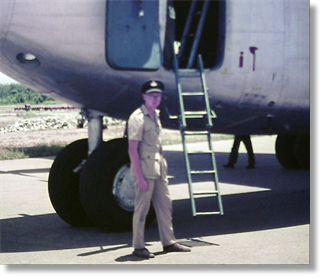
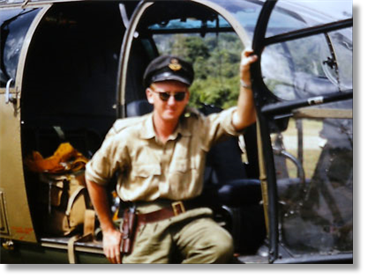
The civilian team usually knocked off at 17:00 when there was a local bus back to Victoria Harbour, but if overtime was required, say if the daily schedule Hastings or Argosy from Changi was running late, one of us would drive them back to the wharf in the AMS J2 Morris mini-van always an olfactory experience as personal hygiene was not high on their list. Rather like being accepted into Nobbys Sergeants Mess drinking group. I knew that I was at least on the right track with Pieut and his boys when one evening six months into my tour after I dropped them of at the wharf, I was invited out to one of the floating villages on one of their outboard-powered canoes. I had been warned about the local drinks (by Nobby of course), but nothing could have prepared me for tapai & tuak (sp?). Tuak was/is a rice beer, not too bad once youve got used to the gruel-like consistency, but tapai, their rice wine, not unlike a sweet sherry, goes down a treat, packs a punch like Somerset scrummpy and the following morning your back teeth are glued together with the rice starch! Fortunately (a) there was no random breath testing on Lab though I did get a funny look from the guard at the gate as I tried to navigate the J2 back onto Lab much later that evening, and (b) the following day as Day Off so that I could try to re-hydrate and un-stick my back teeth.
The year at Lab was dotted with many new experiences for a young ‘Mover; not least when I over-loaded a Beverley with RAAF Sabre fly-away kits to the tune of 6,000 lb over max AUW.
In my own defence, we had no weigh-scales to handle anything over 50lb, and I just took the weights from the in-bound manifests ex-Butterworth. The saga was well-reported in ‘Air Clues’ at the time, and earned my first morning tea with the Lab CO, Wg Cdr ‘Rusty’ Pin, with hat but without cup & saucer.
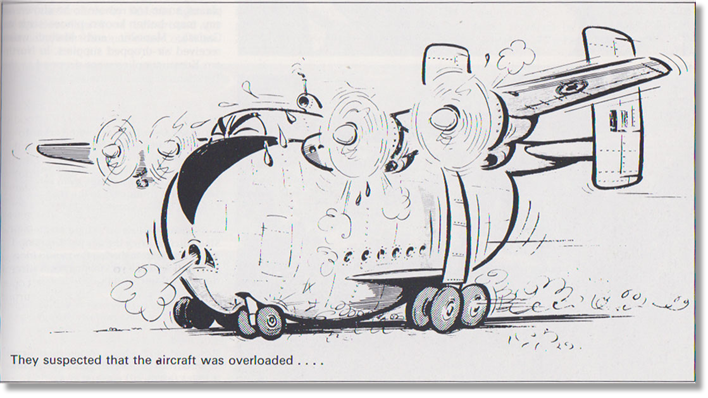
I will just recall a few of the more unusual/fun incidents in my year:
“BODY HANDLING 101”
One afternoon early in 1966 we got word that a 209 Sqn Single Pioneer was inbound with a body on board. We thought that this was unusual, as most of the casualties were taken to the much better equipped hospital at Brunei. While we were pondering the matter, a Malaysian Army ambulance and a Malaysian Army Land Rover arrived at the AMS building. A young Royal Malaysian Regiment Captain comes in and introduces himself. Apparently the in-bound body was a senior RMR officer who has died, not of a war wound but of a brain hemorrhage. He was - or rather had been - a very strict Muslim, and was being brought back to Labuan for burial within the required 24 hour period after death. The young Captain was there to meet the aircraft and conduct the body for immediate burial.
OK, no problem, so we go out to meet the aircraft. Now if you have ever handled a stretcher into or out of a Single Pin, you will know that this is a bit of a juggling act. The port rear seat was removed and the stretcher fed down behind the aircraft captain's seat, with the feet (usually) diagonally down into the rear fuselage. When we got to the aircraft, the position was reversed, and the head of the casualty was 'down hill' in the back. The ambulance backed up to the aircraft and we looked at the problem. While the body was well secured - we thought - to the stretcher, it was just wound in what appeared to be a couple of white bed-sheets. No body bag, no heavy wrapping, no nothing. OK, as the Duty MOVO I took the up-hill end of the stretcher and one of my AMS lads worked inside the aircraft to move the litter up and out. The pilot had disappeared, and as soon as the smell hit us I knew why. OK again, I had been directly involved in the clear-up of the Hastings crash near Abingdon before I left UK, so nothing could or should phase me (oh yeah?). We started to manoeuvre the stretcher out of the aircraft and the young Malaysian Captain stepped forward to take the weight of the head end. Just as the stretcher came clear of the aircraft, the sheets round the casualty's head fell back, and exposed the face and head. Yes, the brain hemorrhage had been confirmed by a ragged removal of the top of the skull, which had then been roughly held back in place by a couple of turns of field dressing bandage. Needless to say there had been some significant leakage, and the deceased looked like something out of a 'Walking Dead' movie (had we had them back then).
At this point the Captain left us in a dead faint, falling backwards onto the tarmac, and the body started to fall, not just out of the aircraft but also out of the stretcher. Now I knew even then that after death a Muslim’s body was not supposed to touch the earth without the proper burial ceremony, and if it did so, it should be interred where it fell. Once again my AMS Sergeant, Nobby Clerk, saved the day by executing an immaculate slip catch of the body's shoulders about 18" off the ground and then flick-passed his hold to two of the Malaysian MedOrds who were with the ambulance. Meanwhile I had relinquished hold of 'my' end of the now-redundant stretcher, and had grabbed the body's feet instead. Together we got the deceased onto one of the ambulance's litters and safely into the vehicle. Crisis over we looked at the young Captain... who had cracked HIS head on the tarmac and was bleeding like a stuck ....err .... sheep. He, too was quickly loaded into the ambulance on the other side of the vehicle, and 'escort' and deceased departed the RAF Labuan tarmac as both religious requirements and protocol dictated .... though I'm not sure that the young Captain, or his immediate superiors, would have agreed.
SWEET VOICES IN THE NIGHT
As I’m sure you all know. Lab was a ’12 month unaccompanied’ tour, and feminine company, unless ‘negotiable’ from the very limited local market in Victoria Town, was non-existent. It was therefore rather unusual to have sweet young female voices coming over the Station Rediffusion Service one evening in late-1965. I was one of the volunteer ‘announcers’ on the Rediffusion Service which piped music and other programs, often off BBC recordings, throughout the Lab domestic area and into the airmen’s’ accommodation bashhas. On the evening in question we had another British Eagle Brit in to rotate part of the Gurkha Battalion to Hong Kong. Usually it was about an hour turn-round, but for some reason the powers-that-be had decided to bring some of the Gurkhas across to Lab by boat instead of the usual Bev (see "Suddenly It all Went Brown" - below). As a result, the Brit was going to be on the ground for several hours. Len had a bright idea. I was off shift, but on call, as we’d also (great timing) got word that a couple of Indo fast patrol boats might be coming our way to pay us a visit in passing. Accordingly the Station personnel was all ‘tooled up’, and I was wandering round with my 9mm Colt Commander in a shoulder holster, over my evening civilian attire of long sleeved white shirt and khaki slacks.
I checked with the other DAMO, Dave Hackford, who was handling the Brit, and went aboard to talk to the crew. My ‘rig’ raised some eyebrows, but after some persuasion, and explaining the situation, I got three of the British Eagle hostessess to come across to the Lab Rediffusion Studio, and the next 90 minutes of program ‘went to air’ with beautiful Scots & Yorkshire female voices doing the introductions and some ad-hoc interviews. I’m not sure what these dulcet tones did to the libido of the blokes in their bashhas that evening, but the following morning I was getting some very odd looks from my team when we started our day’s shift.
SOCIAL LIFE AT LAB
The Keng Wha restaurant in Victoria Town on Lab. Otherwise known as 'The Pink Palace' because of the pink fluro tube illuminations. My first introduction to REAL Chinese food as against the MSG-laced tat then served up in 'Chinese' restaurants in UK at the time. Also my introduction to using chopsticks. Mandatory if you went out with the boys, and if you couldn't master the art you went hungry as the choicest morsels were whipped away from your fumbling grip by a set of flashing sticks wielded by your neighbouring diner - or even from across the table by somebody with long arms. Finest corn & crab soup ever and Groupa balls & ginger to die for. Had my 21st Birthday Dinner there. November 8th 1965. Over a dozen of us ate and drank ourselves into a stupor for about Malay$350 - when it was MAL$10 to the Guinea (that's 21/- to all you heathens). Birthday Boy paid half and the rest split up the balance.
“HOW DO YOU LIKE YOUR STEAK?”
Had a ride in a Shack Mk 2 from Lab in January 1966. Eight hour patrol round the North Borneo coast watching/searching for Indon gun runners. About an hour into the sortie a clipboard came round asking for meal options e.g. "How do you like your steak? With or without chips / mushrooms / peas" etc. Thought that this was a 'take the piss out of the young Plt Off MOVO' and when he opts for a full steak dinner, serve him up the usual Lab in-flight tired sandwiches and over-ripe fruit.
Oh how wrong I was. I had forgotten that the Shack boys did their own rationing out of Changi, and I had my first real rare steak with all the trimmings in six months! Food at Lab wasn't too bad, but steak that hadn't had its origins in a kampong water buffalo --- or at least tasted and chewed that way --- just didn't happen. Should have remembered Dad's tales of WWII Kipper Fleet with the galleys on Sunderlands and Catalinas, and full cooked meal 12 - 18 hours into a North Atlantic mission.
‘SUDDENLY IT ALL WENT BROWN’
I should have known that the day (29th April 1966) wasn’t going to be that simple when we walked out to the aircraft. Because the Gurkha family pick-up was a ‘one off’ task, and so as not to waste time in the normal air drop schedules, it had been decided not to re-hang the clam-shell doors, just stretch a couple of cargo nets over the 10´ x 10´ gap at the rear of the fuselage for safety, after fitting what few passenger seat sets we had in Lab on the lower deck floor, and rigging the para-seats along the side walls.
This gave us about 50 seats down stairs, but still not enough for all the PAX, so some would have to go up into the tail boom to use the seats there. No problem, except for some reason there were no inter-deck ladders at Lab, presumably because they were not needed for in-country air drop tasks, and took up valuable weight and space on the deployment / redeployment legs from/to Seletar on aircraft change overs.
Not an insurmountable problem, however. We arrived at Anduki, and with the aid of a couple of Queens Gurkha Officers (QGO) as translators, sorted out our load of passengers. We got the baggage on board and netted down quite easily, and then selected the families with younger kids to sit downstairs. Gurkha children are wonderfully well behaved, and we knew that if they were told to stay in their seats for the short flight, and not approach the open albeit netted rear of the fuselage, they would do so. We also made sure that there were a couple of seats right by the safety-netted rear for the AQM and myself, to act as shepherds just in case anyone got inquisitive about our ‘drop-head coupe’ configuration in flight.
This left about two dozen or so ladies and older kids to help up the side of the fuselage and into the boom. Not a big deal really, and most of the wives and kids shinned up the stringers without any problem. A couple of the more matronly ladies needed a bit of a helping hand, however, and I was in the process of doing just this when it happened. I was about slightly off to one side of the female passenger that I was assisting when the world went brown, and I couldn’t see at all well.
What had occurred was that the lady in question was well endowed in the ‘busty substances’ department, and in stretching up to grasp the next stringer above, her left breast had escaped from the halter top of her sari, and slapped me fair across the face, knocking off my glasses and then remaining there like some early film test for the face hugger in ‘Aliens’. I initially did not know what was happening, and it was only when I went to remove what was obscuring my vision, and encountered a substantial amount of warm brown boob that all became clear, so to speak. I was a lot less worldly wise in those days, so quickly removed my hand. The lady, quite unperturbed, took one hand off the side of the aircraft, tucked the appendage back from whence it came, and completed her climb unaided.
Unaided by me, that is, because even with the ‘face hugger’ mammary removed, without my glasses which had been knocked off on impact, everything was a blur. Unaided, too by my small team of ‘Movers’ and the 34 Sqn crew, who, having seen what had occurred, were now draped over the aircraft floor and seats in paroxysms of mirth, joined wholeheartedly by the rest of the Ghurkha wives seated below. Eventually I recovered my glasses and my composure, in that order. The plastic frame of my RAF-issue specs had not fared well in the contact with the aircraft floor, however, and it required a couple of turns of ‘Instant Airframe’ tape from the Flight Engineer before clear vision was at least partly restored.
The rest of the flight was uneventful, and the off-load of the PAX at Labuan equally so, courtesy of an aircraft servicing ‘giraffe’ to facilitate the passengers’ disembarkation from the boom via the rear para hatch. The fun re-started when I presented myself to Sick Quarters in order to get a Purchase Order for a new frame for my spectacles in down-town Victoria. Lab being a small place, the story of Plt Off Bowen’s close encounter with a flying boob had circulated quickly, and the young Medical Orderly who filled in the necessary Form Med No XXXX for me to sign to get the replacement specs took much delight in having me carefully record in great detail where, when and, particularly, how the work-related accident had occurred that required the RAF to replace my glasses frame.
It took me several days to live the incident down, and it was only when I swallowed my embarrassment, and pointed out somewhat forcefully that of all the Air Movements and 34 Sqn personnel on almost-celibate Labuan, I was the only one to have had close personal contact, albeit fleetingly, with any part of a female body for some considerable time!
By early 1966 I knew that my request to extend my tour in the Far East, with two years on MAMS had been approved. Accordingly when my fortnights’ mid-tour leave came due, I didn’t feel inclined to do what most ‘One Year’ blokes did - head for Singapore or ‘Honkers’ and blow all their Overseas Allowance savings on booze, women, cameras or stereos – or all four if they has been real ‘Posbie’ during the preceding months.
Instead I booked a slow boat to China – or rather Singapore. I’d always loved Joseph Conrad’s novels about the South China Sea, so I bought a passage from Labuan to Singapore on one of the Borneo Steamship Company’s coasters, calling at every little port along the Sabah and Sarawak coast.
It was a memorable experience, and the smell of raw latex and mangroves still brings back fond memories – but that’s another story.
….One last one:
THE AUSTRALIANS HAVE LANDED
Christmas ’65, they had a lot of trouble with the Javelins falling out of the sky with engine problems, and we got the Aussie Sabre Squadron. Spent I think late October through ’65 through till January ’66 (when I over-loaded the Bev on their RTU), we had 77 Squadron on deployment with us. And oh my God, that was a Christmas to remember. I think my liver has almost recovered by now.
They were flying Sabres, of course. The first couple of times that the Aussie Sabres tried to stay with our Beverley, we went down in the valley to do the air drop and slowed right down. The Aussie Sabres tried to stay with us but quickly went, “Oh, bugger that,” climbed back up to 20,000 feet and orbited CAP while we did the airdrops and came back out again.
TOUR-EX
On 30 July 1965, I few out of Labuan on Argosy XC496, ‘Tour-X’ in Borneo. ‘Confrontation’ was over; as already noted, what the late Neil Davies, called “The last of the gentlemen’s wars” was finished and we felt justifiably proud of ourselves, though 99.9% of the rest of the world didn’t even notice. I joined FEAF MAMS at RAF Seletar with enthusiasm and anticipation – mainly anticipation of spending a lot of time in the back of Beverleys over the next two years, and how true that was!
-End-
From: Al Gordon, St. Albert, AB
Subject: My First Movements Posting
One memory stands out clearly from my first air movements posting. In the Spring of 1966, fresh off basic Transportation Technician course (Trans Tech) as we were called back then, I was posted to my first operational unit, 5 AMU Marville, France. Other than being a passenger twice on the old Yukon aircraft, I knew nothing about loading aircraft; that is despite just finishing my entry-level course. There I was taught more about filling in supply documents than anything else. Other than having a strong back and weak mind, I was unprepared for working the line.
In 5AMU, I was the only AC1 on my crew. I was always the guy who got to climb into the belly of passenger aircraft with the French civilians to offload baggage. Or else I was the guy on the honey bucket detail. In those days it was literally a bucket on a 40 x 48 pallet with a hose attached to the toilet drain. I always seemed to get the most desirable jobs.
Then came the big day to prove myself. I was asked to take charge of our civilian workers and was directed to load a Dakota. It never dawned on me that while all the corporals and LACs were in the middle of a hot card game I was getting shafted again. To me this was big time. I was trusted with this huge responsibility and I was not going to screw up.With four civilians off I went. Under my supervision and assistance, we hand-slugged the boxes of freight up the incline and into the cargo compartment and started to secure everything with rope. Now all these civilians had been doing this job for years and really knew what they were doing. The most experienced was Marc Cachaout (sp?). I think at this point he and the rest were a bit pissed at "Mister Keener" and his big career-promoting move. Marc finally told me to go back inside to tell the sergeant, Bob Wincup, that we were done, while he and the others finished the tie-down.
I reluctantly left Marc in charge and ran up into the crew room so proud of myself and expecting cheers of approval from all. The Sgt looked up from the card game and simply asked, "What is the break-down?" I had no idea what he was talking about. Break down? "Yes, how much weight did you put in each compartment?"
I felt like a fool and ran back to the aircraft just as Marc and the gang were finishing off. I started undoing the ropes and pulling each box out of the pile and wrote down its weight. Marc pretty well had it by then and asked what he hell I was doing - he had learned some pretty functional English from us Movers. I explained to him the importance of knowing how much weight was in each compartment for weight and balance purposes. He told me quite curtly to tell the sergeant that the load is split between compartments C and D and to leave the tie-down the hell alone.
It couldn't be that easy and I tried again to explain and reason with him. Finally, a little afraid for my safety, I went back to the hangar and meekly said the load is all in C and D. I expected to be laughed out of the crew room, but no, the Sgt was happy with the answer.
I learned that day never to under-estimate experience over rank, not that an AC1 has any rank, and a little bit about load planning.
From: John Belcher, Chippenham, Wilts
Subject: Remembrance Parade London
For the fifth year, the RAF Movements and MAMS Association will be marching at the Cenotaph [London] on Remembrance Sunday. This year 71 people are marching on behalf of the Movements Trade.
Following the march, there will be a social gathering at The Porcupine Pub (48 Charing Cross Rd, London WC2H 0BS). This is open to everyone - Movers, families, friends… anyone who is in the area and would like to join us.
At 1330Z, we will be having a toast to those Movers who have gone on their final postings in the last year. If you cannot be there in person, please join us virtually as, like last year, the plan is to show the toast live on the RAF Movers Facebook group. So wherever you are in the world, join us at 1330Z and raise a glass to absent friends.
Please pass the word/share this and let's make this the largest gathering, either in person or virtually, to remember those Movers who are no longer with us.
If you do raise a glass, please take a photo and upload it either to the RAF Movers group or to your own page with #moversabsentfriends in the comments so all the toasts can be easily found. Technology and Movers... what could possibly go wrong?
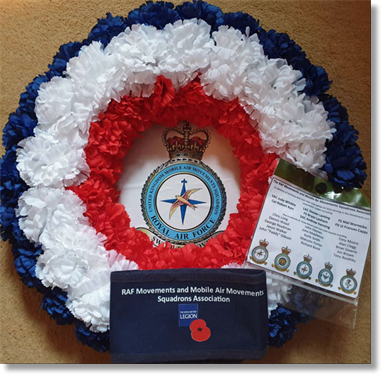
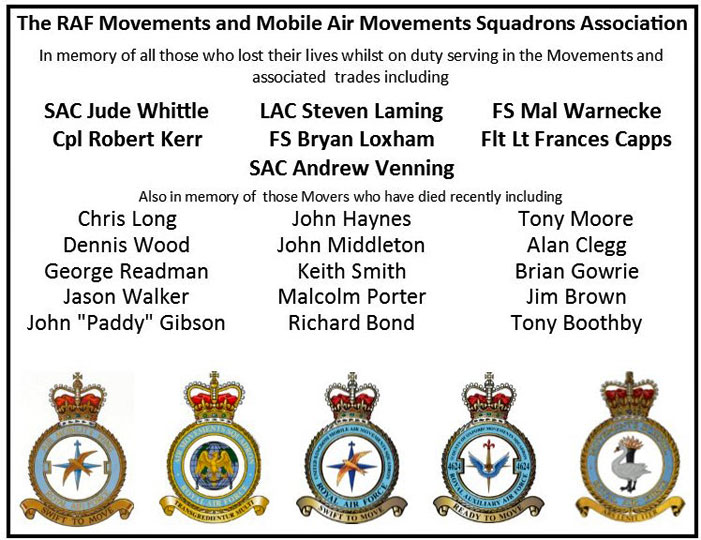
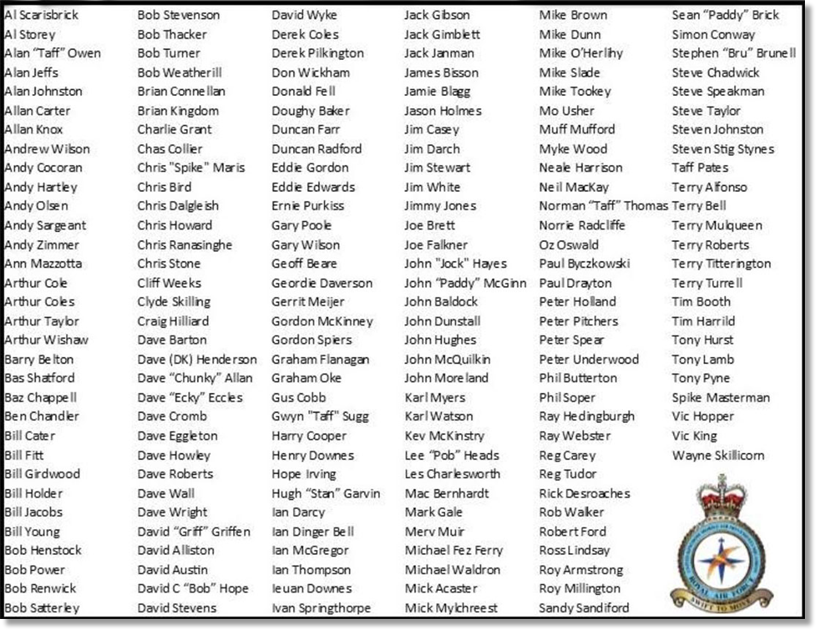

Subject: Aubrey Waycott Recognition
I for one am deeply touched by the passing of a friend and fellow tradesman, Aubrey Waycott. I worked in the mid-sixties while a new Trans Tech with Aubrey at 2 AMU Trenton. He always was a great leader no matter how insignificant some parts of our duties were, he made sure nothing was taken lightly.
A few years later our paths crossed again, this time we were both Loadmasters at 436 Sqn Trenton. I started flying with the Sqn in Ottawa, had a year or so going up to Thule (Top of the World), sometimes 4 or 5 times a month.
A short while later I went on an 85/86 to Alert with Aubrey and for the first time ever after many trips to Baffin Island in the past two years I saw the camp. Yes, for the first time I had a hot meal - a steak, as a matter of fact and saw what the front crew were eating every time we went there, while I was having a box lunch on the flight home, eating it with my dirty working hands after off loading and reloading the Herc in the coldest weather experience(s) on earth; with primitive methods, old trailers covered with ice and snow, workers inexperienced mostly from the runway maintenance crew.
From that day on, I never missed a meal in Alert and, the rest of the Loadmasters owe to Aubrey the change that came about due to his initiatives, this should have been coming from our Loadmaster leader(s), but no, it came from a man who stood strong and tall in front of anyone.
You will be missed Aubrey. RIP
to the memories of:
Aubrey Waycott (RCAF)
Gordon "Geordie" Ord (RAF ex 50th BE)
If you wish to make a donation
to the OBA, send me an e-mail
and I'll let you know how
Tony Gale











